|
Castles on the Rhine!!
The 2015
Rhine River Cruise
March 28 -
April 4
A Seven Day river journey through
Switzerland, Germany, France, and the Netherlands.
Let
Germany's legendary Rhine River take us through
the most incredible scenery imaginable!!
•
The
Swiss Alps
•
The
Black Forest
• Vineyards Galore
•
French Wine cities
•
Valley
of the Castles
•
Amazing Cathedrals
•
The Mermaids of Lorelei Rock
•
Beer Gardens and German Polka
•
The Lost World of the Rhine Gorge
•
Medieval German towns of Rheinland
•
The Amazing Canals of Amsterdam
° Degree Symbol |
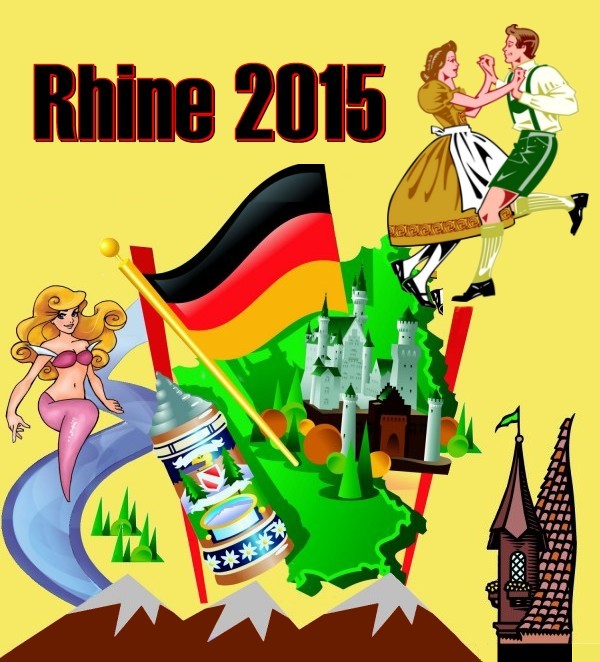 |
2015
Castles on the Rhine Itinerary
|
|
March 28: Day 1
|
Saturday |
Basel,
Switzerland |
|
March 29: Day 2
|
Sunday |
Breisach,
Germany |
|
March 30: Day 3
|
Monday |
Strasbourg,
France |
|
March 31:
Day 4
|
Tuesday |
Heidelberg &
Rüdesheim, Germany |
|
April 01:
Day 5
|
Wednesday |
Braubach &
Koblenz, Germany |
|
April 02:
Day 6
|
Thursday |
Köln
(Cologne), Germany |
|
April 03:
Day 7
|
Friday |
Kinderdijk,
Netherlands |
|
April 04:
Day 8
|
Saturday |
Amsterdam,
Netherlands |
After the trip concludes, why
not extend your trip with a stay in Amsterdam,
the beautiful capital of the Netherlands famous for its canals, windmills, and tulips? |
|
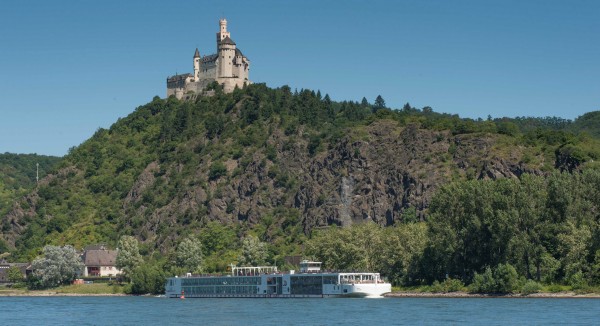 |
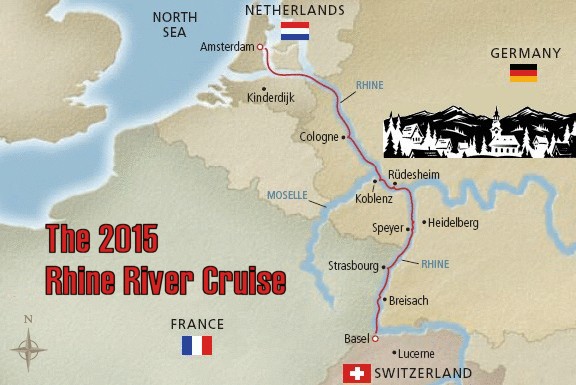
For more information about our trip, be sure to read
About Germany
|
|
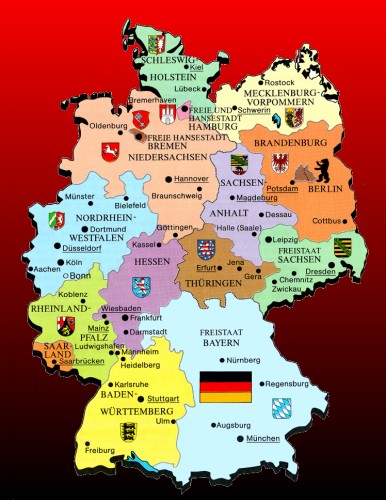 |
|
An Insider's Look at
our
2015
Castles on the
Rhine
Itinerary
|
Day 1:
Basel
Switzerland
 |
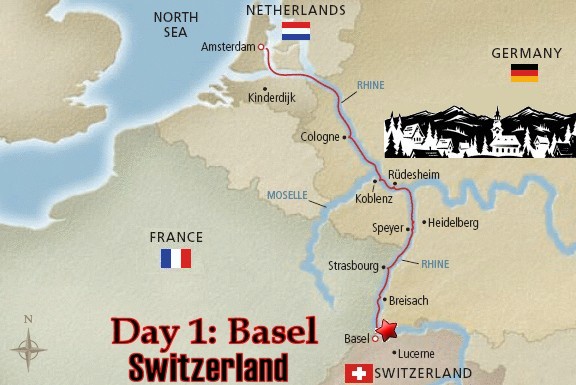 |
|
Basel
Highlights:
•
Embark ship mid-afternoon.
A light lunch buffet is available
•
Your stateroom will be
available at 3 pm
•
Free day to explore
Basel at your leisure
•
Enjoy dinner aboard and
relax
About Basel:
It is at Basel that the mighty
Rhine bends
to begin a 350 mile journey towards
the North Sea.
Basel is located in a spot where the Swiss, French and
German borders meet. While the main part of its city is
situated inside the Swiss border, Basel also has suburbs in
France and Germany.
This exceptional
location makes Basel the heart of
a three-country-triangle that joins Germany, France and
Switzerland.
It also makes Basel the answer to an interesting trivia
question: What city is so large that it spreads its city
limits to three different countries?
This mix of three worlds seems strange to an outsider, but
the people of Basel adapted long ago. Today the main
language of Basel is German, but practically everyone speaks
French and Swiss as well. The allegiance of the people
is shared almost equally between France, Germany, and
Switzerland.
To safeguard its position among much stronger neighbors,
over the centuries Basel has avoided war and sought out
alliances. In so doing, Basel managed to develop a
remarkable reputation for mediation between conflicting
states, cantons (Swiss districts), and communes.
Over time, Basel seems to have gained many friends and few
enemies, an enviable position for any city to maintain.
In the process, the citizens of Basel have an open-minded
attitude towards all differences. This cosmopolitan
perspective extends to all visitors.
Basel is a
visitor-friendly city.
The people of Basel
seem quite accepting of many customs and many cultures.
Basel owes its unusual past due to its unique location
in
the upper left corner of Switzerland.
Packed into a small
amount of space, there are numerous treasures to discover.
Basel has a lot to offer: Stroll through history. Delve into
art and culture in one of the excellent museums. Be
transfixed by a dance or theatre performance. Wine and dine
on recommendation of Gault Millau. Or go on an extended
shopping spree.
Like many European cities, Basel
abounds with culture and
entertainment. Contemporary architecture shapes the
cityscape. Independent theaters clamor for attention with
first-rate productions. Basel offers stages plays, opera and
ballet.
Forty
museums devise fascinating exhibitions on topics as varied
as modern painting, musical instruments, comics or the
ancient world. The city's forty museums display visual arts
from antiquity to the present.
The prestigious
exhibitions hosted by Fondation Beyeler, the Kunstmuseum
(Museum of Fine Art) and Antikenmuseum (Museum of Ancient
Art) draw international attention.
Basel is known for music. Music lovers will
appreciate what Basel has to offer: From classical concerts
and operas to jazz, rock and pop concerts, there is
something to suit everybody's taste.
For example, there is the internationally renowned
symphony orchestra, the chamber orchestra and the Schola
Cantorum Basiliensis (an institute of the Musik-Akademie).
These
account for Basel's reputation as a center
for classical music.
Lovers
of jazz, rock or pop will also find something to suit their
taste at the many concert venues.
Shopping in Basel can be an adventure.
In the small city centre, lots of great brands such as
Bally, Burberry, Fogal and Swarovski offer their products
for sale, many of them in the pedestrian zone, where
shopping and sightseeing are pleasantly combined. In the
alleys leading off from the main shopping streets, little
boutiques invite visitors to enter and explore.
For shoppers who
prefer to find everything in one place, two shopping centers
offer their services: St. Jakobs park and Stucki in
Kleinhüningen.
|
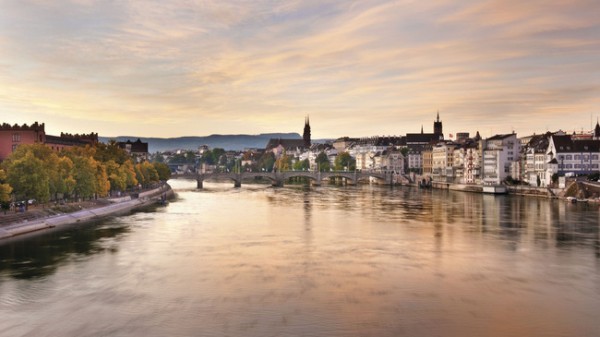
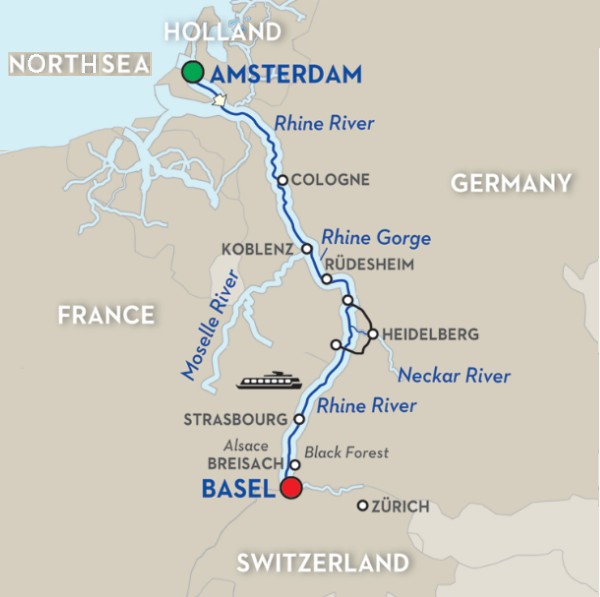
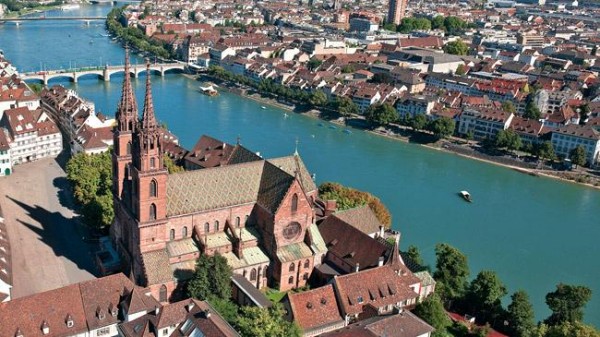
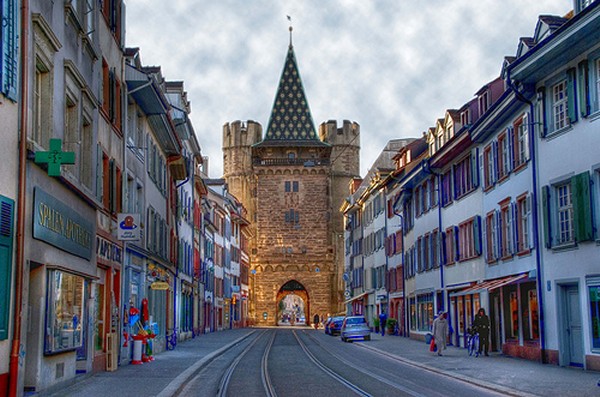 |
Schwarzwald!
Germany's Black Forest
|
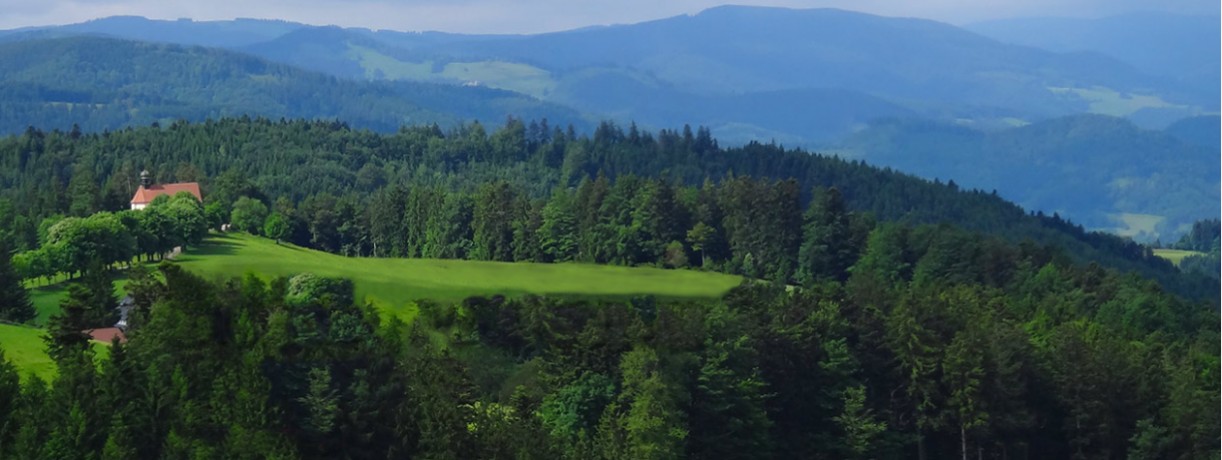 |
|
 |
Day
2:
Breisach
Germany
The Black Forest!
|
|
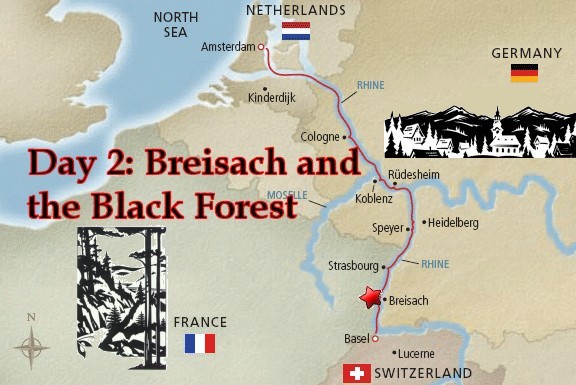 |
|
Highlights:
•
Black Forest Excursion
•
Cuckoo clock-making
demonstration
•
Free time in Breisach
•
Optional excursion to
Colmar
•
Optional World War II
excursion
•
Welcome Reception &
Dinner
About Breisach:
Situated along the Rhine River on the French and German
border lies the city of Breisach. Breisach
is more village than city. It has
approximately 16,500 inhabitants.
The "Breisach" name is Celtic; it
means 'breakwater'.
There is a story behind the name.
There was a huge flood in the 19th century.
Breisach, being located high on the hill, broke the
flood's surge. Thus its name
came to be.
Here's an interesting piece of trivia for you. About
42 miles to the east in the midst of the Black Forest lies
the little town of Donaueschingen, population 20,000.
Can you guess the significance of this town? The
answer in a moment...
Breisach's most
prominent landmark is the Gothic Cathedral of St. Stephanus.
The Cathedral is visible from any part of the city, and
towers high above the Rhine. The Cathedral houses numerous
treasures and outstanding artworks. Both Roman and gothic
elements can be found in the cathedral.
Breisach is located in one of the warmest parts of Germany,
next to Alsace, which is famous for its wine-growing. It is
home to Europe's largest producing wine
region.
The history of Breisach dates back over 4000 years.
Since the early stone age people have settled on the plateau
which is today the Cathedral hill. During the Celtic age this
area was the residence of a prince who held trade
connections up to the Mediterranean.
The Romans built a fort on the hill because of its strategic
location. Around 400, the fort
was conquered by the Alemanni and in the following
centuries, Breisach emerged to be one of the most important
towns on the Upper Rhine.
In 1273, Breisach became a free imperial town and its boom
years began. During this time, St. Stephan's Cathedral was
built and the town became an aspiring community.
During the regime of emperor Maximilian I in 1500, Breisach
became one of the strongest forts in Europe.
Breisach was captured during the Thirty Year's War, by
Duke Bernhard von Weimar in 1638.
After his death in 1639, the town fell under French rule for
nearly 60 years.
There was almost complete destruction of the town by the
French in the Coalition War in 1793.
After the devastation, Breisach's glory days were
over.
In the 19th century, Breisach was rebuilt. The center of
town shifted from the Cathedral hill to the lower town.
Breisach was now a country town that belonged to the grand
duchy of Baden. Following the German-French war in 1871,
Breisach boomed again. After the end of World War I. the
boom stopped.
Breisach was not spared Nazi cruelty.
During the Nazi regime, the 700 year old Jewish
community of Breisach experienced massive prosecution and
then annihilation. In 1938 their synagogue was destroyed and
in 1940 what were the last remaining Jewish citizens were
sent to an extermination camp.
During World War II Breisach was evacuated several times.
By the end of the War, 85%
of the town was destroyed through artillery bombardment.
After the war, Breisach
became the seat of a French
garrison from 1945 to 1997.
Oh, about that trivia question concerning the little town of
Donaueschingen. "Donau" is the German name for a
certain river. Have you ever heard of the Donau River?
Probably not, but surely you have heard of the mighty Danube
River.
The Danube originates in Germany's Black Forest. In
the little town of Donaueschingen, two small streams known
as the Brigach River and the Breg River merge to become the
starting point for the Danube River.
The Danube is Europe's second longest river after the Volga.
It is definitely the longest river in central Europe.
After flowing 1,776 miles due east, the Danube passes
through several Central and Eastern European capitals before
emptying its water into the Black Sea via the Danube Delta
in Romania and Ukraine.
Hmm. So the
Danube starts in the Black Forest and ends in the Black Sea.
So why is it called the Blue Danube? Ah, well, that
one is easy to answer. The northern slopes of the Alps
send their melting snow to the Danube. At this point,
the sparkling Alpine waters give the river the purest
imaginable color of blue.
It is fascinating to note that the two most important rivers
of Europe are located so close together. In fact, at
the city of Schaffhausen on the northern Swiss
border, it looks like only 20 miles separate the Rhine and
Danube as they run parallel in opposite directions.
How strange is that?
The Danube first became known to history as one of the
long-standing frontiers of the Roman Empire. After the
fall of Rome, it played a vital role in the settlement and
political evolution of central and southeastern Europe.
In a fashion similar to the Rhine, the banks of the Danube
are lined with castles and fortresses. And, like the
Rhine, the Danube has served as the boundary between great
empires while its waters acted as a vital commercial highway
between nations.
The majesty of the Danube River has long been celebrated in
music. The Blue Danube, a famous Viennese Waltz
("An der
schönen, blauen Donau",
1867, by Johann Strauss), has become the symbol of imperial
Vienna.
About the Black
Forest, Danger and Fairy Tales!
Over the centuries, the Black Forest
has given birth to countless foreboding legends. Time
and again, there have been people
who have gone missing in the forest.
This is no surprise. Think about how easy it must be
to wander aimlessly into the forest and lose one's way.
After all, the Black
Forest goes on for
endless miles and miles.
Once you are inside, it is simple to get lost.
The forest is like a giant maze
with fog
and thick brush and trees
that disguise the way back.
The forest has countless
oak, beech and fir trees growing
together so thick that they
gave the overall appearance of 'blackness'.
Even more mysterious, for some strange reason
maps or compasses do not work.
If you get lost, you could be in real trouble. Those
who enter the forest unprepared
may never have a chance of getting
back out.
What makes the Black Forest, or the "Schwarzwald" as the
Germans refer to it, interesting are the countless dark
legends associated with this dense forest.
Over the ages, with all those people disappearing, it
doesn't take much of an imagination to wonder if
supernatural creatures might be responsible.
There are
all sorts of
Black Forest myths which involve
witches and wolves, wizards
and fairies,
ogres, trolls, and dwarves.
Indeed,
this menacing forest is said to be the origin of stories
such as Hansel & Gretel and Little Red Riding Hood.
With all these scary stories in one's imagination, no one
dares enter the Black Forest at night.
Beware the Black Forest. These
thick woods have frightened nearby residents and
visitors for countless years. Those
who enter may not return.
Or at
least that's how the legend goes...
Today the
Schwarzwald is a wonderful destination to visit.
Nor is it quite as dangerous anymore. The once
neverending forest has been largely tamed. At this
point, the once deadly forest is lined with meadows and
farms, villages with half-timbered homes.
Other attractions of
the Black Forest include beautiful and historic towns,
traditional half-timbered houses,
foreboding castles and palaces, unique churches and
monasteries.
While the Black Forest
isn't quite so deadly anymore, everyone agrees it is still
one of Europe's most beautiful destinations.
Broad valleys, narrow gorges, sprawling mountains and
towering summits create breathtaking
views. The natural surroundings shift from
sunny vineyards to shadowy forests.
The gentle hills in the east,
the Kaiserstuhl in the west, moors
and lakes, climbing rocks and orchards all
contribute to
the Black Forest experience.
|

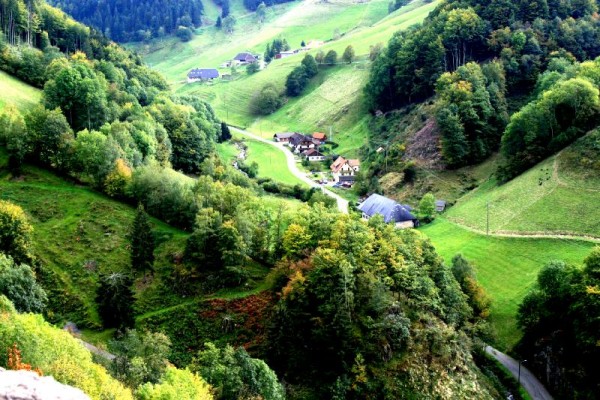
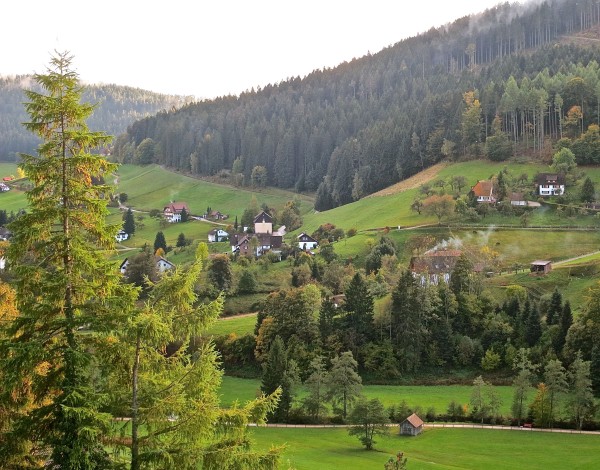


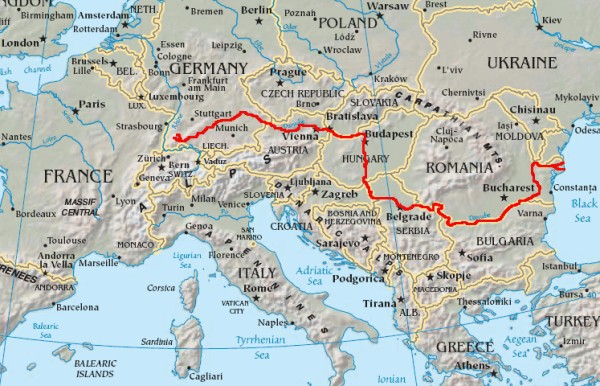
In
Germany's Black Forest,
the Rhine and the Danube pass
within 20 miles of each other heading in opposite directions
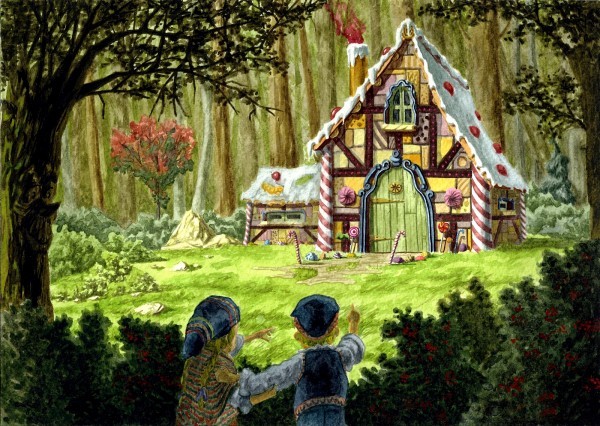
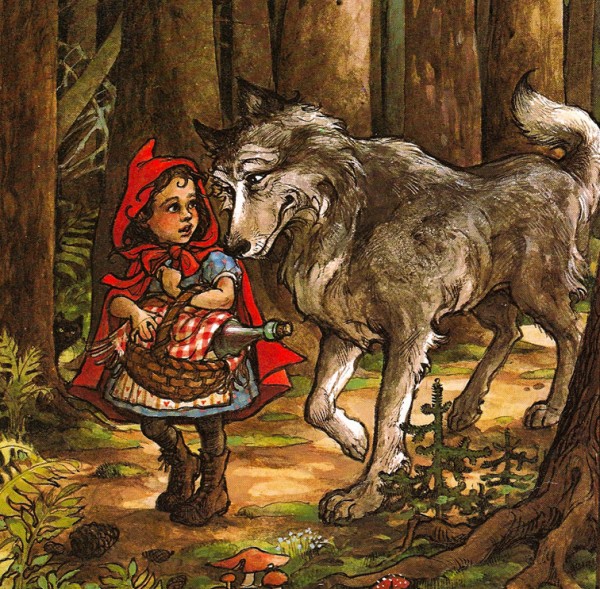 |
|
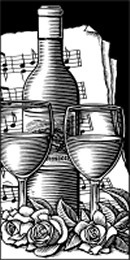 |
Day
3:
Strasbourg
France
|
|
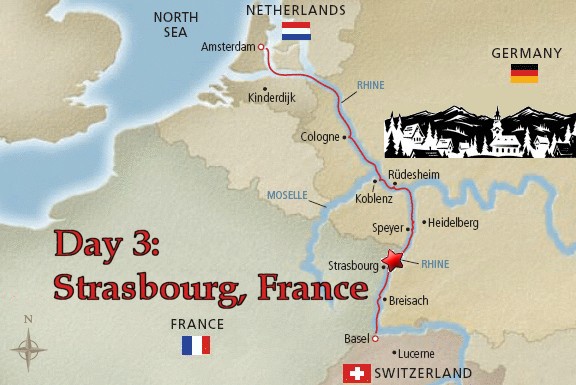 |
|
Highlights:
•
City tour of Strasbourg
including European Parliament, Old Town and Cathedral Square
•
Free time to explore
Strasbourg--free shuttle bus to city center
•
Optional Alsation Wine
Tasting in Obernai
About Strasbourg:
Strasbourg is small city that borders the
edge of the Black Forest and the legendary Rhine
River.
Strasbourg may not be a well-known
European city to Americans, but it turns
out to be a very lovely town complete with vintage wines and
Old World Charm.
Is it Germany or
is it France?
Strasbourg has
flavors of both France and Germany, and sits right on the
border of the two countries.
Although the postcards will say you are in France, the
architecture is distinctly German.
Not surprisingly, Strasbourg has
changed hands between the French and Germans
many times over the centuries.
As a result,
many of its citizens have a shared German and French
heritage. Practically everyone speaks both languages.
There are times when it
can be hard to discern exactly
which country you are in while visiting.
For
example, the
signs are in both languages. German beer
and French wine are
equally popular.
The food goes back and forth. It
is common to find German
dishes like sauerkraut with French
names ("choucroute").
The Ill River
The
strangely named "Ill River"
winds a Venice-like path through the city.
Over the centuries, this lovely river has become the
centerpiece for Strasbourg. One constant theme of
European cities is the care they take with their waterways.
The Europeans take great care to landscape the banks of
their rivers and streams and make them postcard pretty.
The Ill River is the perfect example. It is so pretty
that everyone loves to admire it.
The
Ill River plays host to many cruise tours of the
city.
Strasbourg Cathedral
Strasbourg Cathedral is another example
of Europe's gothic architecture. The stunning pink
sandstone facade is quite unique and breathtaking. Be sure
to wander inside, where intricate carvings captivate. Each
day at 12:30 p.m., visitors can see the circa-1800s
astrological clock with its lengthy show.
The cathedral
serves as a hub of activity, with
shops and restaurants nearby.
The courtyard outside
hosts the city's immensely popular Christmas market.
Victor Hugo declared it a
'gigantic and delicate marvel'; Goethe professed that its
'loftiness is linked to its beauty'; and, no matter the
angle or time of day, you too will be captivated by
Strasbourg's centerpiece Gothic cathedral. At once immense
and intricate, the red-sandstone cathedral is a riot of
filigree stonework and flying buttresses, leering gargoyles
and lacy spires.
The west facade, most impressive if approached from rue
Mercière, was completed in 1284, but the 142m spire - the
tallest of its time - was not in place until 1439; its
southern companion was never built.
On a sunny day, the 12th- to 14th-century stained-glass
windows - especially the rose window over the western portal
- shine like jewels.
A spiral staircase twists up to the 66m-high platform above
the facade, from which the tower and its Gothic openwork
spire soar another 76m. As Hugo put it: 'From the belfry,
the view is wonderful. Strasbourg lays at your feet, the old
city of tiled triangular roof tops and gable windows,
interrupted by towers and churches as picturesque as those
of any city in Flanders.'
La
Petite France
La Petite
France is easily Strasbourg's prettiest and most
enchanting neighborhood. It is so
perfectly preserved from medieval times that it seems
like it was
taken from a fairy tale book.
This is the perfect place for one of those long walks!
Stroll along its
winding streets
and over the many bridges
that cross the Ill River. Breathe
in the scent of fresh-baked gingerbread or the inviting
aromas from the restaurants. Gaze at the timbered buildings
that feature beautiful blooming plants.
When you get tired of walking, you can shop and
people-watch at Place Kleber, a
bustling square lined with popular shops and a hub of
activity.
Memorable cuisine
This is one of the best areas in France when it comes to
delectable cuisine, and that's saying quite a bit
considering this is, well, France. The dishes here have a
boldness that is reminiscent of the German roots, while
there is attention to quality and detail that is the epitome
of the French gourmet philosophy.
There are local cuisine
experiences you shouldn't miss. For
example, enjoy visiting a local winestub
for the ultimate France/German experience.
The wines that are most popular here are white, light and
tart, such as Reislings and Gewurztraminers. The Alsatian
beers are also wonderful.
Be sure to sample
the local "eau de vie." Literally meaning "water of life,"
this is fruit liquor to the extreme. Unlike American liquors
that are typically made with sugar, the Alsatian eau de vie
is sweetened entirely by fruit.
Definitely taste the baeckoffe and
coq au Reisling, some of the fabulous local specialties.
Baeckoffe consists of a stew of meats, potatoes and spices.
Coq au Riesling is much like the better-known coq au vin,
but is made with Riesling (and, in my opinion, tastier). It
is usually served over fresh-made spaetzle, a German noodle.
There are many other local dishes that are divine as well,
so be sure to experiment! The Alsatian desserts are among
the world's best.
It goes without saying that the food and drink on this trip
will be just as memorable as the castles, forests, and
flowers.
|
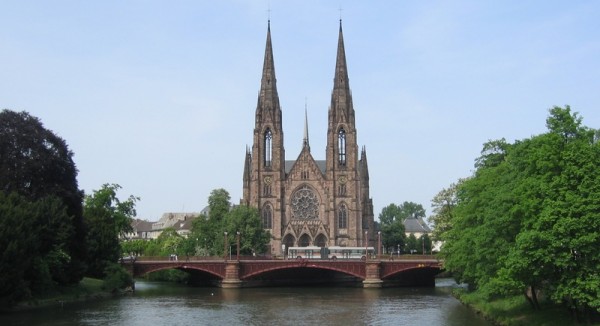

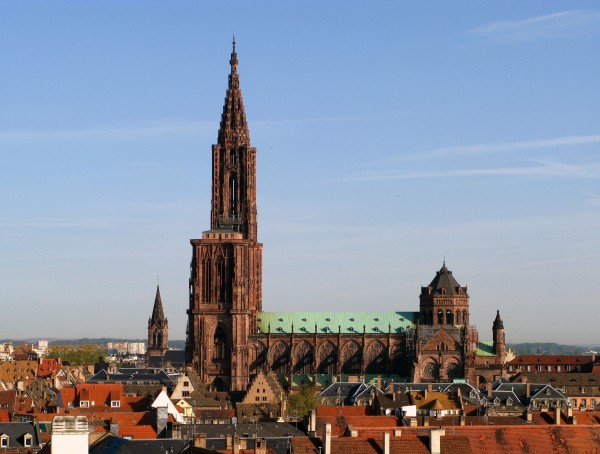
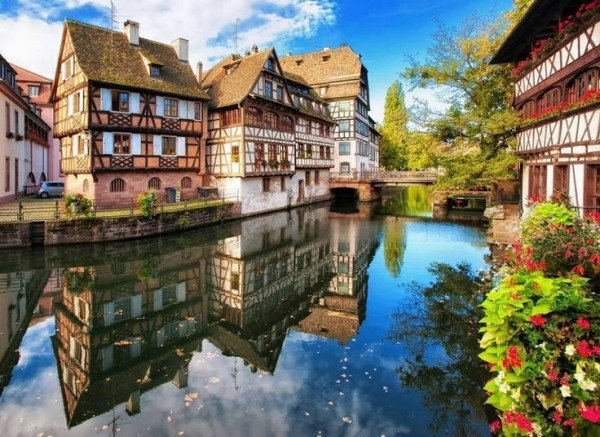
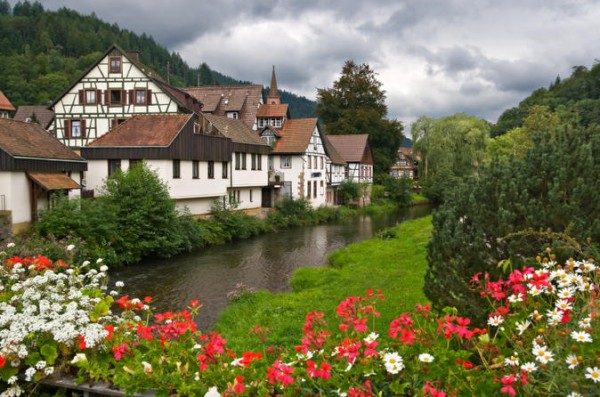
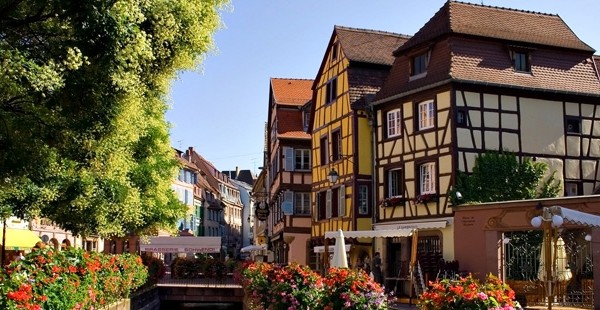 |

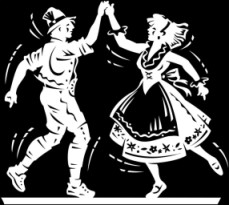 |
|
Day
4:
Heidelberg, Germany
Rüdesheim, Germany |
|
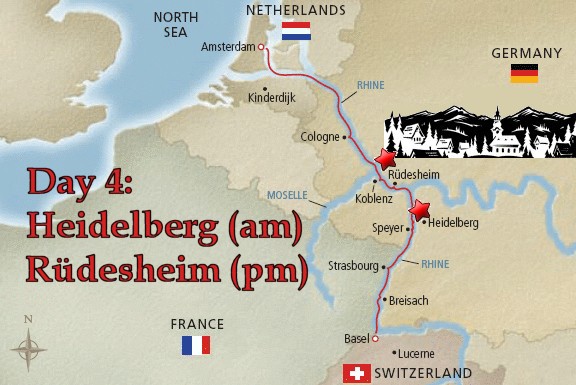 |
|
Heidelberg Highlights:
•
Tour
of Heidelberg including Heidelberg Castle and Old Town
•
Scenic Cruising
Note:
France and Germany share the Rhine as a common border for
approximately 100 miles. 30 miles after leaving
Strasbourg, the Viking longboat Kvasir will leave this
shared border. The next 250 miles of the journey will
take place exclusively in Germany.
Day Four will be a busy day. The first part of
the Day Four
will take us to the lovely town of Heidelberg.
Heidelberg is 70 miles north of Strasbourg.
We will be taking something of a side trip to get to
Heidelberg. Heidelberg is located 15 miles to the east
of the Rhine on the Neckar River, a Rhine tributary.
We will tour the Old Town, then visit the Castle. This
should take up the entire morning.
In the afternoon, the ship will sail back to the Rhine and
travel some 70 miles north till we reach Rüdesheim, a
famous wine-making town. In the evening, we will go
into town to explore.
About Heidelberg:
Germany's oldest university town, Heidelberg is situated in
the Neckar Valley just east of the Rhine. Known as the
cradle of the German Romantic movement, it also boasts
beautiful baroque architecture. Heidelberg is most famous as
the site of the imposing ruins of Heidelberg Castle, a
magnificent red sandstone ruin perched 330 feet above the
Rhine. It was the home of the Palatinate princes until it
was destroyed by fire in the 1800s.
Heidelberg is filled with unusual museums, and most of
Heidelberg's historical buildings and artifacts have been
preserved, allowing visitors the ability to learn about
German culture and architecture, and experience first-hand
one of the many reasons that makes Heidelberg such an
interesting place to visit.
Heidelberg is also a great place to be active - there are
many parks located throughout the city, and the cycling and
hiking paths are numerous, giving anyone who wishes to enjoy
the outdoors plenty of opportunities.
Heidelberg Castle
One of Europe's most famous landmarks, the romantic ruins of
Heidelberg Castle have attracted visitors since the 19th
century.
It is the paradox of seeing something so magnificent in a
state of such beautiful ruin that gives Heidelberg Castle
and its park such a captivating aura. The epitome of German
romanticism, it's like something from another world. Even
the majestic ruins, overgrown with ivy, still reflect the
power and magnificence of the castle's former residents, the
Wittelsbach dynasty.
Built as a fortress with towers, casemates and moats in
around 1300, this castle perched high above the town
developed over four hundred years into a symbol of the
feudal power of the Palatinate Electors of the time. The
oldest still discernibly residential building is the
Ruprecht wing with its magnificent Renaissance fireplace.
The Otto-Heinrich wing was the first castle building in
Germany to have elaborate exterior decoration. The
best-preserved building is the Friedrich wing whose facade
with statues of the electors is like an ancestral portrait
gallery. On the ground floor is the castle church, still
intact, with residential rooms above. Particularly
enchanting is the Hortus Palatinus pleasure garden, an
earthly paradise created by human hand during the reign of
Friedrich V. For a long time, this was considered the eighth
wonder of the world, even though it was never completed.
Rüdesheim
Highlights
•
Free
time in Rüdesheim
•
Optional Rüdesheim Evening Tour that includes mini train
ride into town, dinner and a folkloric performance
Dancing and Drinking in Alt
Rüdesheim
Rüdesheim is a town perfect for tourism. Its omnipresent
oompah bands and sprawling hillside vineyards tickle all the
right notes of "quaintness" for the river cruise traveler
looking for a picturesque German village.
You
have come to the right place. Rüdesheim and its environs
have preserved the quintessential look of Old Germany.
Drosselgasse
The biggest tourist draw in Rüdesheim is the Drosselgasse,
German for "choke alley". The Drosselgasse is a
narrow, cobbled lane that runs through the heart of the
town. It connects the main street -- Oberstrasse -- to
Rheinstrasse, the street alongside the river.
The
Drosselgasse is full of beautifully decorated restaurants
full of music and laughter. It is easy to allow
yourself to be swept along. The festive currents of
music, the tempting aromas of grilled meat, the free-flowing
Rheingau wines and large quantities of fine German beer
attract huge crowds of travelers.
Indeed, tourists seem to find their way to the town's narrow
Drosselgasse year-round. The pedestrian-friendly lane
is crowded with restaurants, wine taverns and open-air
biergartens that feature live music almost year-round.
This is the place where both entertainers and tourists
gather to dance the German Polka.
Live band entertainment, brass instruments and dance music
play all day and all night during the summer in the many
wine taverns and open-air garden taverns along the
144-metre-long narrow cobblestone pedestrian street. Since
The Drosselgasse is Rüdesheim's most famous attraction, it
is always crowded with tourists.
Rüdesheim is small, but that makes it easy to access the
entire town. The nice thing about Rüdesheim's small
size is that you can make a quick exit from the melee if you
wish.
Within minutes, you can find yourself wandering through row
upon row of ripening grapes to an uncrowded vista over the
Rhine Gorge, a UNESCO World Heritage Site -- or relaxing in
one of the more quiet beer gardens.
So, indulge yourself. Take a gondola ride, taste some
Rhenish wine, enjoy the sunshine on the Rhine Valley.
Besides Drosselgasse, there are other things to see in
Rüdesheim.
Bromserburg Castle, a more than 1,000-year-old structure
that is the oldest castle in the Rhine Gorge World Heritage
site, ranks as perhaps the most notable building in
Rüdesheim. The town bought the castle in 1941. It has
since turned it into the Rheingauer Wine Museum, which
houses a collection of wine presses, glasses and other
wine-themed pieces.
The Niederwald, which means 'forest clearing' or 'coppice',
is a broad hill that rises to the east behind Rüdesheim and
is carpeted with vineyards producing some of the best wines
in the Rhine Gorge region. Trails run through the vineyards
and lead to a variety of sights within the Niederwald
Landscape Park.
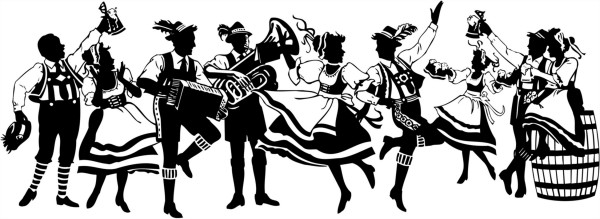
|
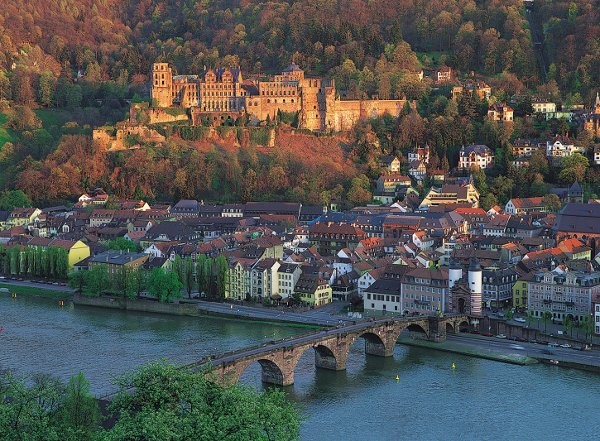
The beautiful Heidelberg Castle
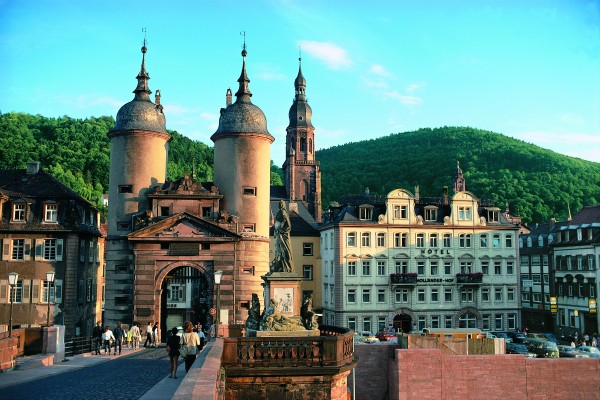
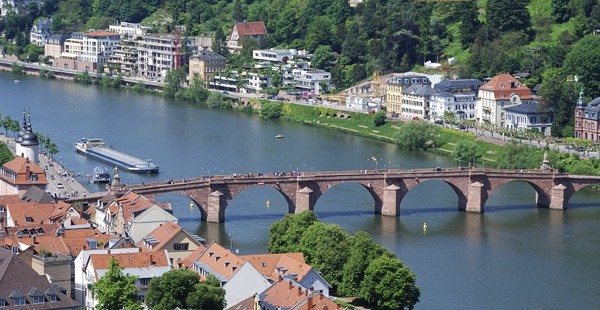
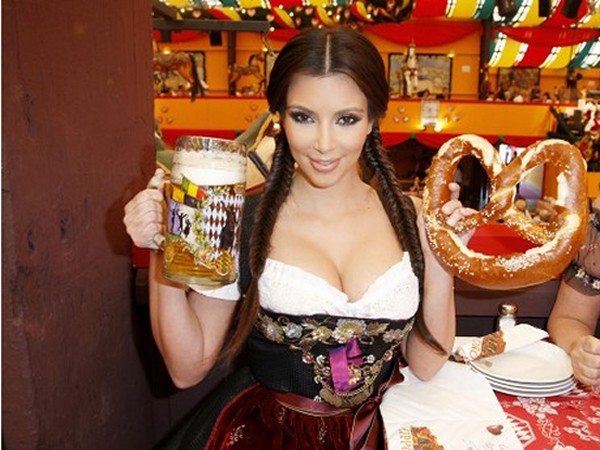
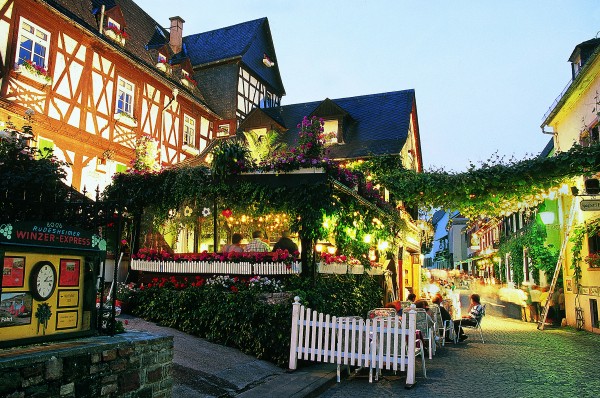
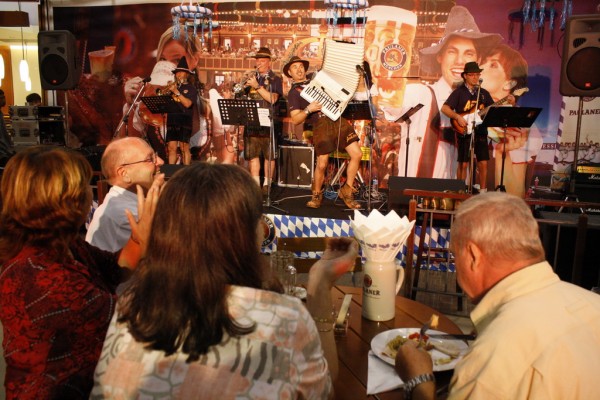
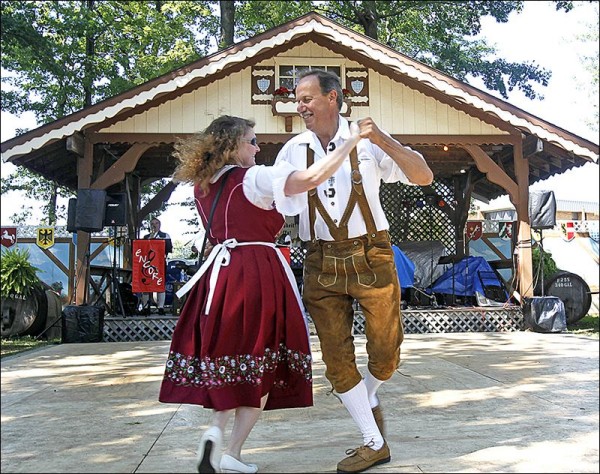 |
Into
the Valley of the Castles
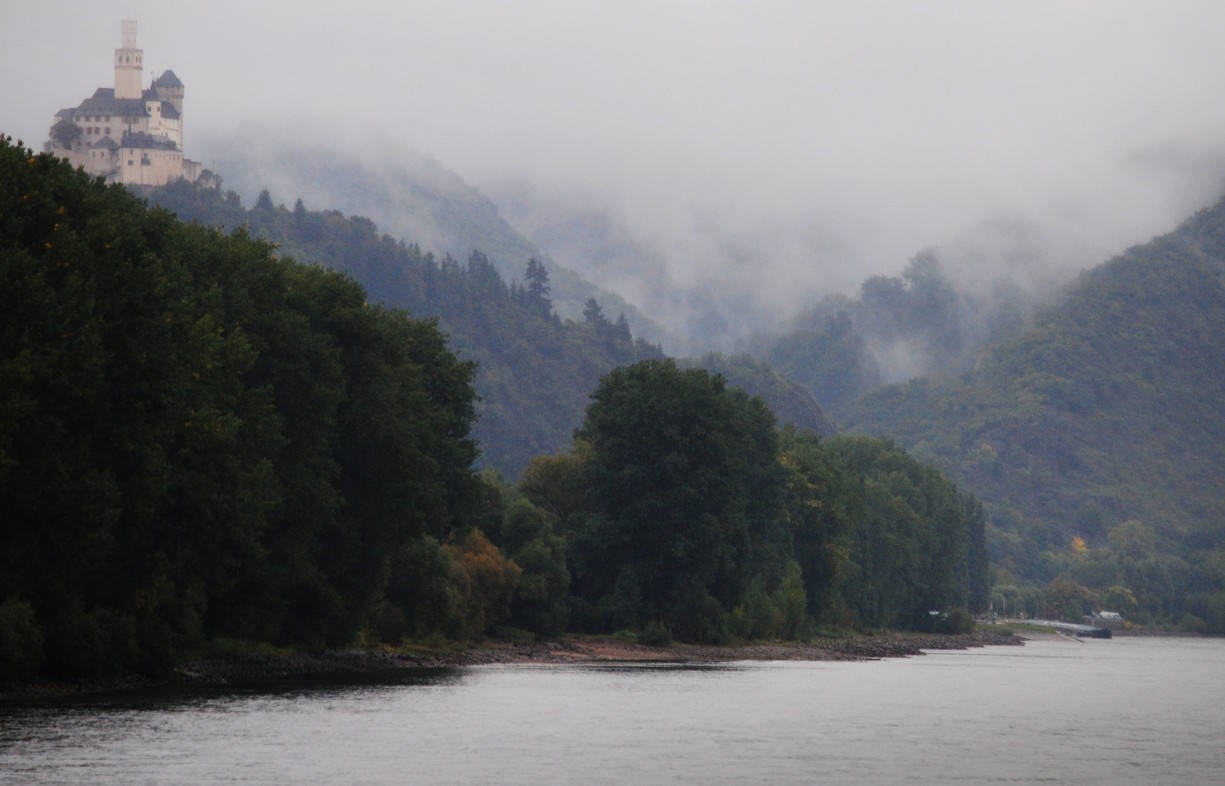 |
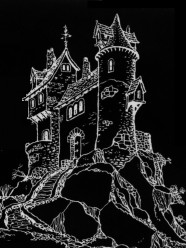 |
|
Day 5:
Braubach & Koblenz
Germany |
|
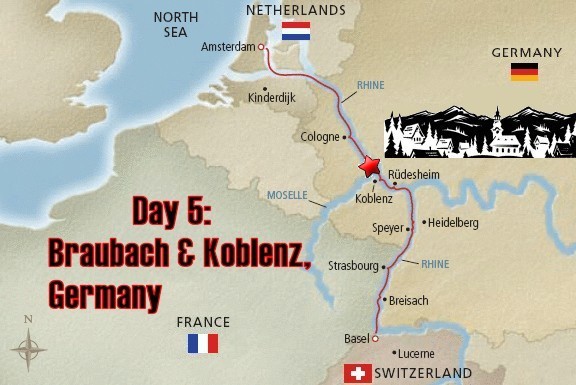 |
|
Braubach Highlights:
•
Scenic cruising along the Middle Rhine
•
Our day to see an
endless series of Castles, little towns, ruins plus the
famous Lorelei, the legendary rock formation
•
Tour
of Marksburg Castle and its museum.
This
day will be a major highlight on our trip. This day
will take us up a 40 mile stretch known as the Rhine
Gorge that features one amazing German castle after
another. In other words, it is a "Castle Festival" of
sorts.
The Upper Middle Rhine Valley is one of the most magnificent
and oldest cultural landscapes in Europe. It is seen as the
epitome of the Rhine legacy as a seat of power in medieval
Germany.
The great richness and beauty of the central Rhine has been
honored by UNESCO and the 65 km long section between the old
Roman town of Koblenz and the towns of Bingen and Rüdesheim
were taken into the list of world heritage sites in the year
2002.
This section has long been an inspiration for the Rhine's
painters, poets, philosophers and musicians and no wonder:
the narrow breakout of the Rhine through the Rhine slate
mountains with its constructions, memorials and the string
of settlements which line the banks like a row of pearls
together with the vine slopes.
It is hard to find something similar in Europe. The
exceptional thing is the number of castles, mansions and
fortresses: around 40 of these constructions between Koblenz
and Bingen prove the strategic importance which the Rhine
had in the early centuries.
Marksburg Castle
Rising high above the town of Braubach on a hill
overlooking the Rhine, Marksburg Castle has survived
time to be one of the best examples of mediaeval
architecture in Germany. It holds the distinction of being
the only hill castle on the Rhine that has never been
destroyed. Over time it was added to, so what we see today
is a compilation of centuries of building.
Built in 1117 and expanded and renovated over the next 400
years, Marksburg Castle is near the German village of
Braubach. The castle was built as a fortress to protect
Braubach and to reinforce the collection of duties from
ships sailing on the Rhine River.
The castle was never a royal residence. In the Napoleonic
era, it was used as a prison, and the castle suffered from
lack of repair before it was sold in 1900 to the German
Castle Association, whose goal is to preserve castles such
as Marksburg.
The Association bought the castle for the symbolic price of
1000 German marks. Although heavily damaged by American
artillery during World War II, today the castle is a
centerpiece of the UNESCO World Heritage Site Rhine Gorge.
It's the only hill castle on the Rhine to never have been
completely destroyed.
Marksburg has a tall and slender keep. The keep rises from a
small courtyard (one of the smallest in Germany) to a height
of 40m. Parts of the keep date to the beginnings of the
castle. It has an entrance that is 10m above ground, which
made it hard for attackers to reach. The original castle was
gradually added to and it expanded with the need for
defenses.
The earliest part of the castle was constructed by the Lord
of Eppstein, with a triangular layout built in the
Romanesque style. By 1283 the castle was bought by Count
Eberhard II of Katzenelnbogen, whose family was one of the
wealthiest in the Rhineland. The castle was expanded in the
Gothic style which gives the castle its unique present day
style.
One interesting feature you can still see at the castle is a
medieval herb garden containing 160 plants. The garden is a
showcase of plants ranging from medical and seasoning to
toxic deadly nightshade and hemlock.
In 1479 the castle passed to the Landgraves of Hesse with
the marriage of the heiress Anna to Heinrich of Hesse. It
became a fortress with artillery batteries. The cannons were
used during the 30 Years War. Aimed at the Rhine, with a
reach of 1000 meters, they guarded the valley below. After
the introduction of firearms, strengthening the castles
defenses became urgent. The added defenses saved Marksburg
from ever being seriously attacked.
In 1803 the German empire broke up and the Duchy of Nassau
gained control of Marksburg. It was during this time that
the castle became a home for disabled soldiers and also a
state prison. The castle was taken over by Prussia in 1866
during the Austro-Prussian War. It fell into decay after
being used as apartments.
It was purchased in 1900 by the German Castle Association
with the help of Kaiser Wilhelm II, for 1,000 gold marks.
Marksburg Castle is now the home for the offices of the
German Castle Association (DBV) who work to protect and
preserve castles and stately homes in Germany. The offices
and official residence of the general secretary of the
German Castle Association (DBV) are now part of the
Romanesque Great Hall, the oldest main residential building
of the castle.
Koblenz Highlights:
•
Free
time in Koblenz
•
UNESCO world heritage site - Upper Middle Rhine Valley
About Koblenz
One of the most beautiful and oldest towns in Germany with
over 2000 years of history.
Situated in the picturesque landscape of the Rhine and
Moselle and surrounded by four low mountain ranges is the
2000-year-old town of Koblenz. Its abundance of cultural
monuments and historic buildings, its cozy lanes and narrow
alleyways, the relaxed and happy atmosphere of its squares
and river promenades make Koblenz a friendly town where its
guests feel right at home.
The town owes its name to the Romans who named the 'castle'
they constructed here around 9 B.C. "castellum apud
confluentes." This means "castle at the confluence of the
rivers". Visitors on the trail of Koblenz' past, find
themselves caught up in the history of a town which over the
centuries was captured by the Franks, chosen as a place of
residence by German prince electors, conquered by the French
and fortified by the Prussians. A truly European place.
Discover Koblenz with its spectacular castles, former
mansion, and grand town houses, the beautiful places of
interest and its historical heritage; enjoy the beauty of
its narrow streets and romantic corners.
Fortress walls and towers, castles and palaces, monuments
and parks paint a vivid picture of the town's eventful past.
Koblenz was conquered by foreign armies and has received
princes, kings, emperors and presidents within its walls.
Today visitors from all over the world enjoy discovering the
history and rich cultural heritage of this old town.
While strolling through the town's historic centre with its
narrow lanes and romantic squares you may choose to go
shopping, or just to have a break in one of the many
sidewalk cafés.
A walk from "Florinsmarkt" (St Florin's Market) to
"Münzplatz (Old Mint Square) and "Jesuitenplatz" (Jesuits'
Square) will take you past historic monuments such as
medieval churches (St Florin's Church and Our Lady's Church)
and beautifully restored historic house fronts as well as
attractive shops inviting you to shopping in historic
surroundings.
In the evening you may choose to wine and dine in an indoor
or outdoor restaurant or go for wine tasting in a typical
"Weinstube" (wine tavern). Nowhere in Old Koblenz is far
from the banks of the Rhine or the Moselle. Here you can
stroll leisurely along the rivers watching barges and boats
passing by...
|
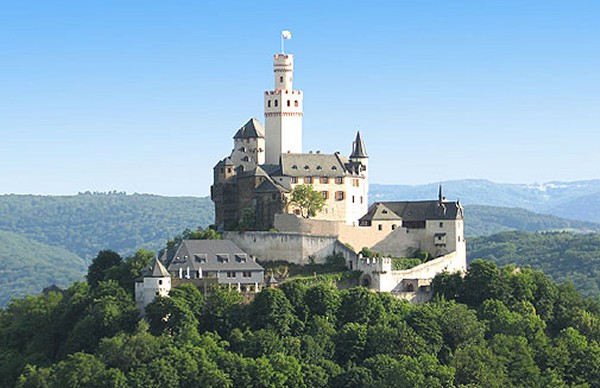
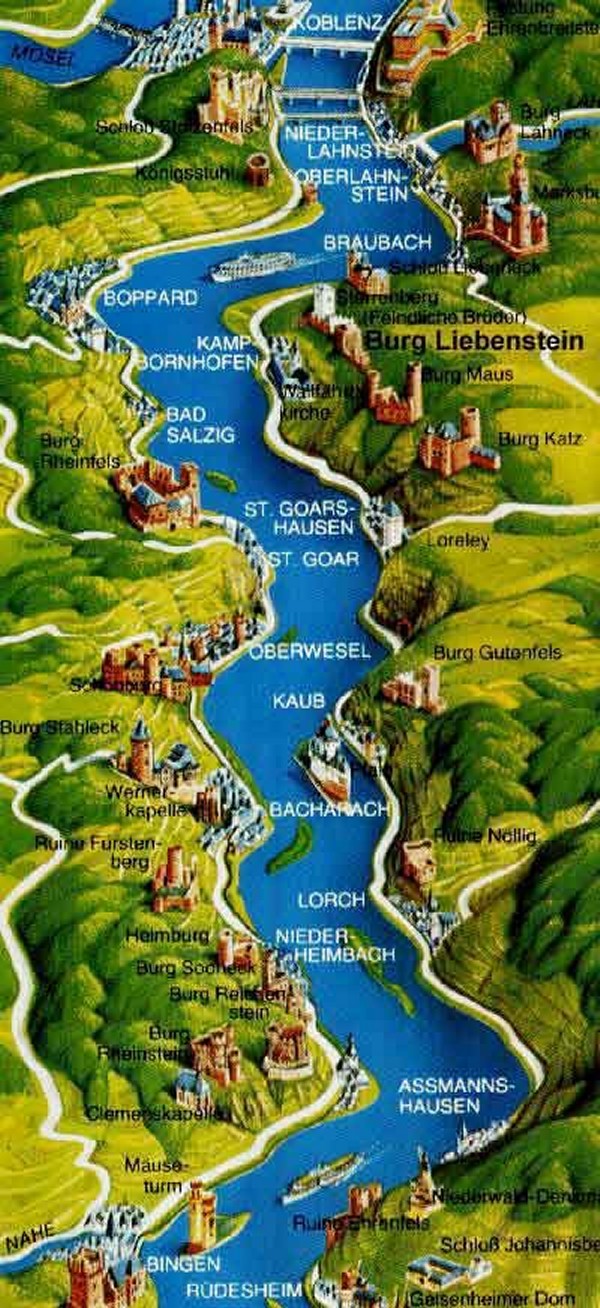
This
map helps to convey the amazing stretch of the Rhine known
as "Schlossreihe", aka "Castle Row". It is hard
to believe, but this 30 mile expanse features practically
one new castle every mile!
This
is truly an amazing sight to behold. The ship starts
out from the small village of Rüdesheim and slowly cruises
past one castle at a time. Towards the end of the 30
mile journey, the ship stops at Braubach, home of Marksburg
Castle perched high above the Rhine atop a mountain crest.
Our group will be escorted up to the castle where we can
indulge all sorts of fantasies.
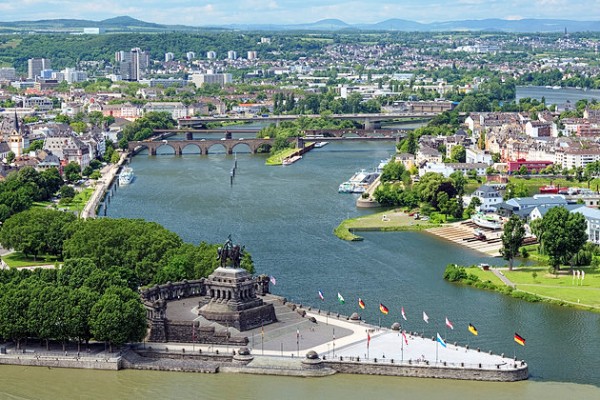
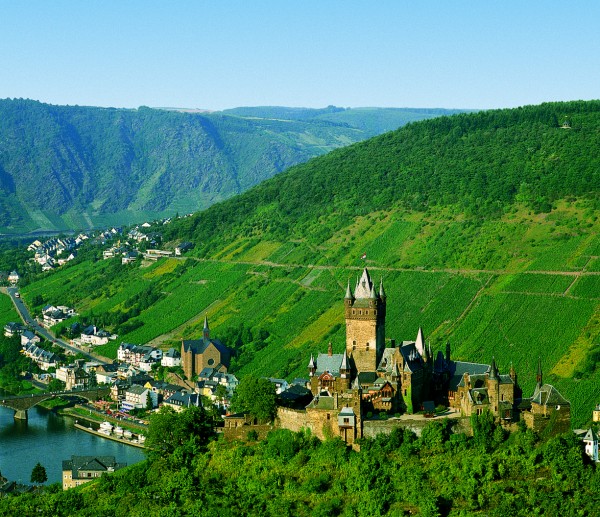
Reichsberg Castle on the Moselle River, about 30 miles west
of Koblenz.
|
 |
Day 6:
Köln (Cologne) Germany
|
|
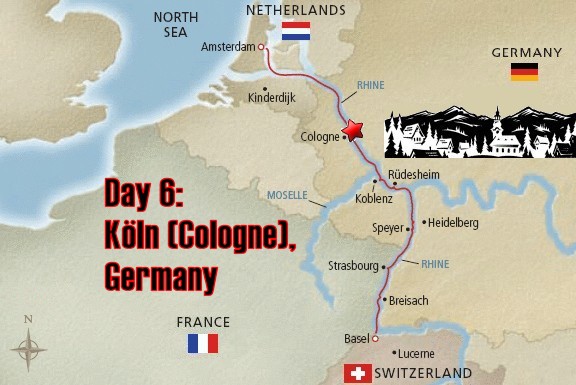 |
|
Cologne Highlights:
•
Walking tour including Old Town and Cologne Cathedral
•
Optional Evening Beer Culture Tour to the Brauhaus
•
Free
time to explore Cologne
About Cologne:
Cologne offers seemingly endless attractions, led by its
famous cathedral whose filigree twin spires dominate the
skyline. It's regularly voted the country's single most
popular tourist attraction. The city's museum landscape is
especially strong when it comes to art but also has
something in store for fans of chocolate, sports and even
Roman history. Its people are well known for their
liberalism and joie de vivre and it's easy to have a good
time right along with them year-round in the beer halls of
the Altstadt (old town) or during the springtime Carnival.
Cologne is like a 3-D textbook on history and architecture.
Drifting about town you'll stumble upon an ancient Roman
wall, medieval churches galore, nondescript postwar
buildings, avant-garde structures and even a new postmodern
quarter right on the Rhine. Germany's fourth-largest city
was founded by the Romans in 38 BC and given the lofty name
Colonia Claudia Ara Aggripinensium. It grew into a major
trading centre, a tradition it solidified in the Middle Ages
and continues to uphold today.
Kölner Dom
Cologne's geographical and spiritual heart - and its
single-biggest tourist draw - is the magnificent Kölner Dom.
With its soaring twin spires, this is the Mt Everest of
cathedrals, jam-packed with art and treasures. Its loftiness
and dignified ambience leave only the most jaded of visitors
untouched.
Construction began in 1248 in the French Gothic style but
proceeded slowly and was eventually halted in 1560 when
funds ran out. The half-built church lingered for nearly 300
years and even suffered a stint as a horse stable and prison
when Napoleon occupied the town. A few decades later, a
generous cash infusion from Prussian King Friedrich Wilhelm
IV finally led to its completion in 1880. Luckily, it
escaped WWII bombing raids with nary a shrapnel wound.
It has been a Unesco World Heritage Site since 1996.
The Dom is Germany's largest cathedral and must be circled
to truly appreciate its dimensions. Note how its lacy spires
and flying buttresses create a sensation of lightness and
fragility despite its mass and height. This sensation
continues inside, where a phalanx of pillars and arches
supports the lofty nave. Soft light filters through the
dazzling stained-glass windows , including the spectacular
new one by Gerhard Richter in the transept - a kaleidoscope
of 11,500 squares in 72 colours, Richter's abstract design
has been called a 'symphony of light' and, in the afternoon
especially, when the sun hits it just so, it's easy to
understand why.
Among the cathedral's numerous treasures, the pièce de
résistance is the Shrine of the Three Kings behind the main
altar, a richly bejewelled and gilded sarcophagus said to
hold the remains of the kings who followed the star to the
stable in Bethlehem where Jesus was born. The bones were
spirited out of Milan in 1164 as spoils of war by Emperor
Barbarossa's chancellor and instantly turned Cologne into a
major pilgrimage site.
Other highlights include the Gero Crucifix (970), notable
for its monumental size and an emotional intensity rarely
achieved in those early medieval days; the choir stalls from
1310, richly carved from oak; and the altar painting by
local artist Stephan Lochner from around 1450.
For an exercise fix, climb the 509 steps up the Dom's south
tower to the base of the steeple that dwarfed all buildings
in Europe until Gustave Eiffel built a certain tower in
Paris. A good excuse to take a breather on your way up is
the 24-tonne Peter Bell (1923), the largest free-swinging
working bell in the world. Views from the 95m platform are
so wonderful, you'll forget your vertigo.
Cologne is justifiably proud of its Domschatz-kammer, whose
reliquaries, robes, sculptures and liturgical objects are
handsomely presented in medieval vaulted rooms. Standouts
include a Gothic bishop's staff from 1322 and a 15th-century
sword.
Old Town
Old Town is in many ways, the heart and soul of the city.
It's near the Köln Dom, surrounded by "the Ring," a ring of
streets, botanical space, and promenades following the path
of the old city's walls. Inside the ring and along the Rhine
is a vibrant scene of bars, pubs, and restaurants. While it
can get crowded, Old Town is known for its hustle and
overall friendly vibe. Beyond the rhythm of the bars and
shops are seemingly innumerable small streets and alleys
that wind through the old buildings. It is sectioned into
several squares, providing visitors with ample opportunities
to explore and soak in Cologne's culture.
Museums
Being an internationally renowned cultural metropolis,
Cologne boasts 36 museums and far more than 100 art
galleries. Whether municipal, ecclesiastical, company-owned,
or private museum - the wide array of displayed exhibits
ranges from Roman, medieval via non-European to contemporary
art.
Waterfront
The newly designed, restructured Rheinauhafen waterfront
complex is a young and attractive district of Cologne. The
210,000 m² development, which is located right on the Rhine,
not far from to the city center, has quickly become
established as one of Cologne's popular attractions. The
waterfront district features a mix of modern residential and
office buildings interspersed with many cafés, restaurants,
and galleries. And visitors with a passion for architecture
and culture will also find points of interest in the
Rheinauhafen.
The centerpiece of the new Cologne promenade is the trio of
buildings called the "Kranhäuser" (crane towers), which rise
to a height of about 60 meters. The buildings, which are
shaped like hoisting cranes, are defining elements of the
skyline on the west bank of the Rhine.
Cable Car
The Cologne cable car has been in operation for over 50
years and was the first cable car in Europe to cross a
river. Since 1957 more than 15 million passengers have
experienced the unique panoramic view of the city of Cologne
from the air and enjoyed unforgettable impressions. The
crossing with the Cologne cable car is definitely the right
high point of a wonderful day tour of the city.
Historic Town Hall
Among natives of Cologne and art historians all over the
world, the town hall in Cologne is famous for its loggia,
the Renaissance façade built by the Kalkar master builder
Wilhelm Vernukken. Erected between 1569 and 1573, it served
to replace the run-down mediaeval entrance hall in front of
the main hall. Today, almost every major art history
encyclopedia in the world pictures the loggia as one of the
most typical buildings of the Renaissance era.
The loggia originally functioned as a link between city
council and citizenry and in many respects continues to do
so to the present day. In the past, the council would use
this prestigious setting to hold a "morning address" at set
times to inform the citizens gathered in the town hall
square of their latest rulings.
Today, the loggia acts as a more informal link between the
council and the citizens of Cologne, for example as a place
where fans can cheer their idols as they look down from the
open façade on the upper floor following an official
reception in the town hall.
The parapet on the upper floor is decorated with a sculpture
depicting the tale of the struggle between the mayor Gryn
and the lion, symbolizing the power of the council. The
legend tells of the fight between citizens and the church
for leadership over the city.
The town hall tower has similar symbolic value, erected by
the Cologne guilds between 1407 and 1414 as a symbol of
their leadership over the city following their victory over
the nobility in 1396 when they introduced a charter defining
the new constitution of the city. With five floors and a
total height of 61 meters, the town hall tower became the
first secular "high-rise building" in Cologne.
The
late Gothic style tower with three tetragonal lower floors
and two octagonal upper floors boasts an impressive 130
stone statues and the famous "Platzjabbeck", a wooden
grotesque face sculpture which opens its mouth and sticks
out its tongue when the tower clock strikes the hour.
The excavations during restoration work revealed the remains
of the Roman praetorium which acted as a base for the Roman
governors of Germania Inferior and later the Kings of
Ripuarian Franconia. The praetorium is now accessible again
following the restorations. The fate of the city of Cologne
has therefore been determined in the same place for 2,000
years.
The center of the historic town hall is the "Piazetta", a
900 sqm large, 12.60 metre high open space with a view of
the tower through the north wall and containing the striking
if somewhat controversial monument "Wolke" by Hann Trier.
The "Hansasaal" (Hanseatic League hall) and the loggia are
to the west, the tower and the "Löwenhof" (lion courtyard)
to the north, reception hall and office rooms of the mayor
and chief municipal director to the east and the
administrative wing to the south.
The Hansasaal forms the heart of the historic town hall. The
room dates back to the 14th century when it was used as a
meeting room by the Hanseatic League and later went on to be
used by the council as a courtroom and reception hall.
The Hansasaal was restored to its high Gothic design after
the war. The south wall is of particular interest,
displaying the "Neun guten Helden" (nine good heroes)
sculpture in its Gothic pinnacle structures. The north side
is decorated with the eight prophet figures dating back to
around 1410, which previously adorned the adjoining
"Prophets Chamber" room.
Today, the most impressive examples of artwork in this room
are the two wood inlay doorways by Melchior von Reidt
(around 1600) leading to the Hansasaal and "Senatssaal"
(senate room). The impressive council chairs by Melchior von
Reidt are also worthy of special mention here.
Birthplace of the Eau
de Cologne Fragrance
"Eau de Cologne" or simply cologne is the French translation
of "Kölnisch Wasser". In English, that
translates to “Water of Cologne”, a fragrance originating
from Cologne, Germany.
The original Eau de Cologne is a spirit-citrus perfume
launched in Cologne in 1709 by Giovanni Maria Farina
(1685–1766), an Italian perfume maker from Santa Maria
Maggiore Valle Vigezzo.
In 1708, Italian-born Johann Maria Farina wrote to his
brother Jean Baptiste: "I have found a fragrance that
reminds me of an Italian spring morning, of mountain
daffodils and orange blossoms after the rain".
Farina named his fragrance Eau de Cologne, in honour of his
new hometown.
|
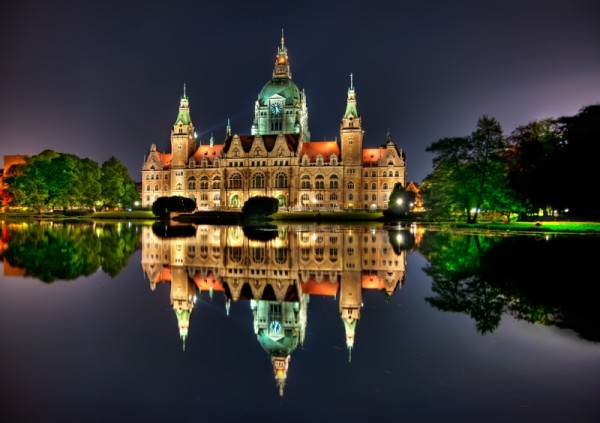
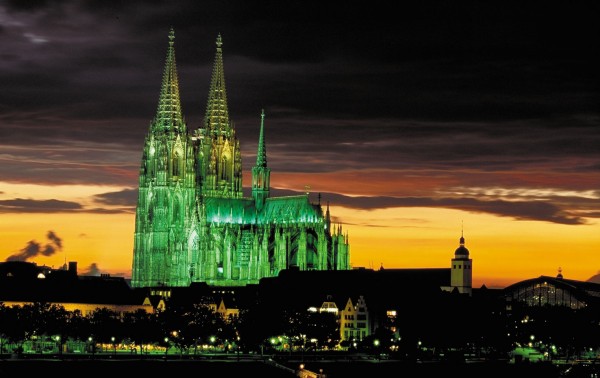
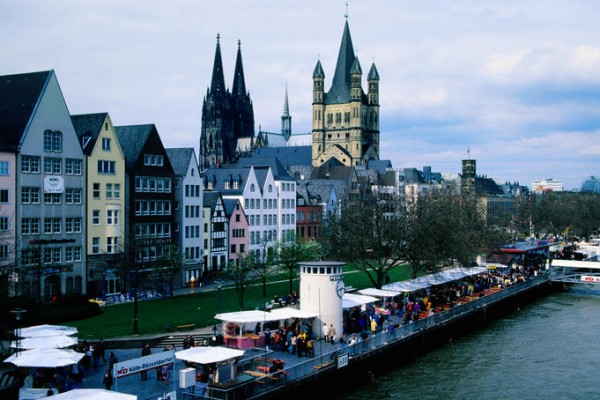
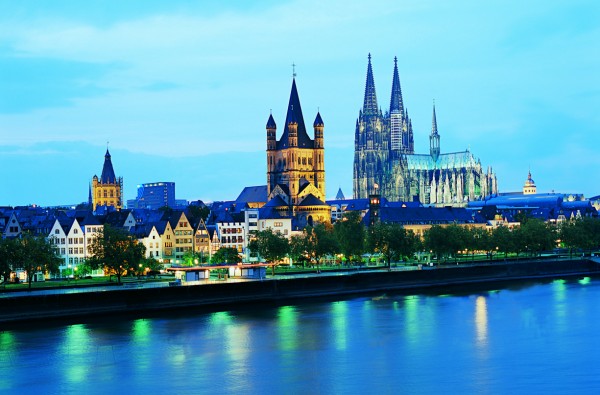
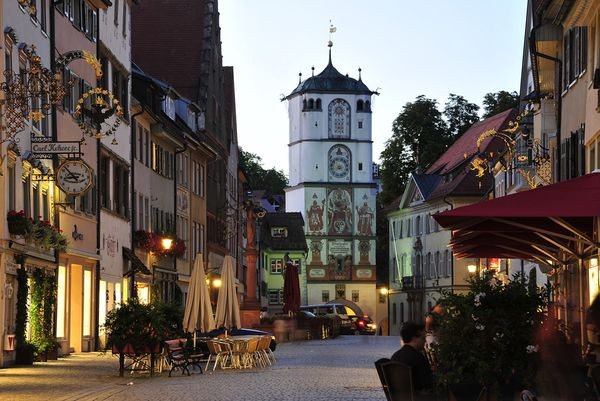

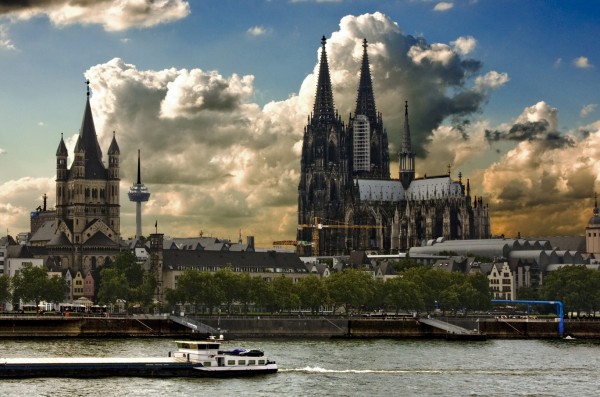
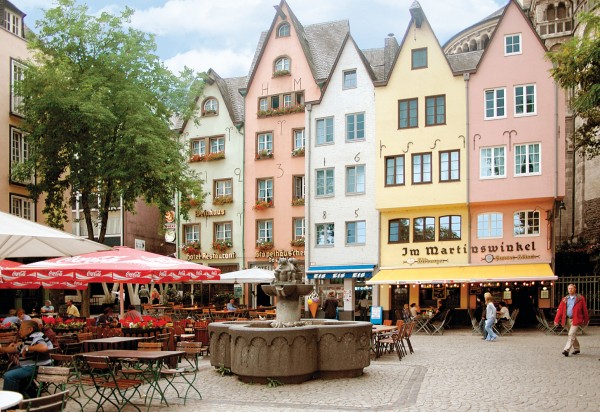
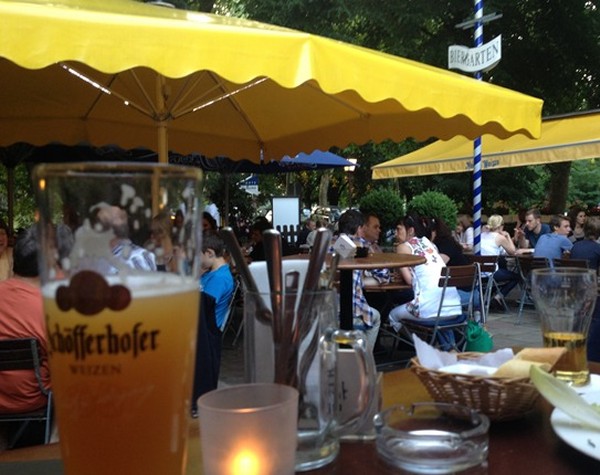
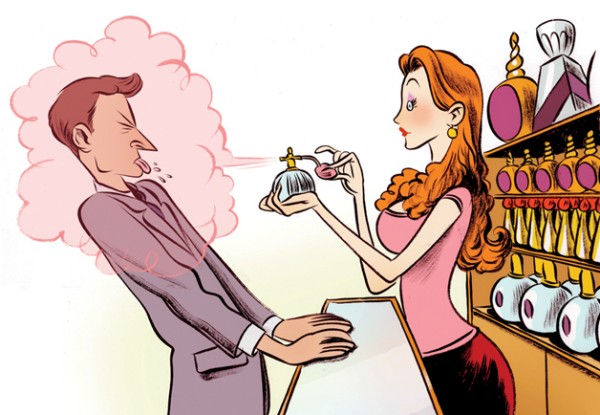 |
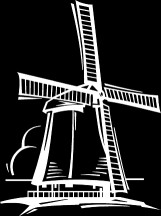 |
Day 7: Kinderdijk
Netherlands
|
|
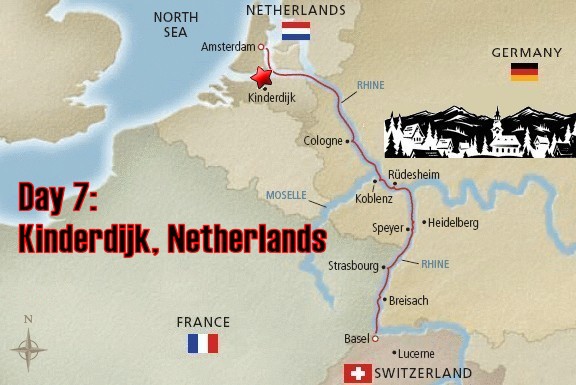 |
|
Kinderdijk Highlights:
•
Scenic cruising through Holland's maze of waterways
•
Tour
the windmills of Kinderdijk
•
Dutch cheese & jenever tasting
•
Captain's Farewell Reception and Dinner
About Kinderdijk:
Kinderdijk is a village in the Netherlands in the
province South Holland just 15 miles east of Rotterdam. Its
claim to fame are 19 pristinely preserved windmills.
Kinderdijk is situated in a polder in the Alblasserwaard at
the confluence of the Lek and Noord rivers.
The system of 19 windmills was built around 1740. This group
of mills is the largest concentration of old windmills in
the Netherlands. The windmills of Kinderdijk are one of the
best-known Dutch tourist sites. They have been a UNESCO
World Heritage Site since 1997.
There is of course a legend known as the 'Hero of Haarlem'
which tells the tale about a little boy who saved Holland by
sticking his thumb to stop a dangerous leak in a dike.
Interestingly, the name "Kinderdijk" is Dutch for "Children
dike".
In 1421, during the Saint Elizabeth flood of 1421, the Grote
Hollandse Waard flooded, but the Alblasserwaard polder
stayed unflooded. It is said that when the terrible storm
had subsided, someone went to the dike between these two
areas, to see what could be saved. In the distance, he saw a
wooden cradle floating on the waters.
As it came nearer, some movement was detected. A cat was
seen in the cradle trying to keep it in balance by jumping
back and forth so that no water could get into it. As the
cradle eventually came close enough to the dike for a
bystander to pick up the cradle, he saw that a baby was
quietly sleeping inside it, nice and dry.
The cat had kept the cradle balanced and afloat. This
folktale and legend has been published as "The Cat and the
Cradle" in English.
In Alblasserwaard, problems with water became more and more
apparent in the 13th century. Large canals, called
"weteringen", were dug to get rid of the excess water in the
polders. However, the drained soil started setting, while
the level of the river rose due to the river's sand
deposits. After a few centuries, an additional way to keep
the polders dry was required.
It was decided to build a series of windmills, with a
limited capacity to bridge water level differences, but just
able to pump water into a reservoir at an intermediate level
between the soil in the polder and the river; the reservoir
could be pumped out into the river by other windmills
whenever the river level was low enough; the river level has
both seasonal and tidal variations. Although some of the
windmills are still used, the main water works are provided
by two diesel pumping stations near one of the entrances of
the windmills site.
|
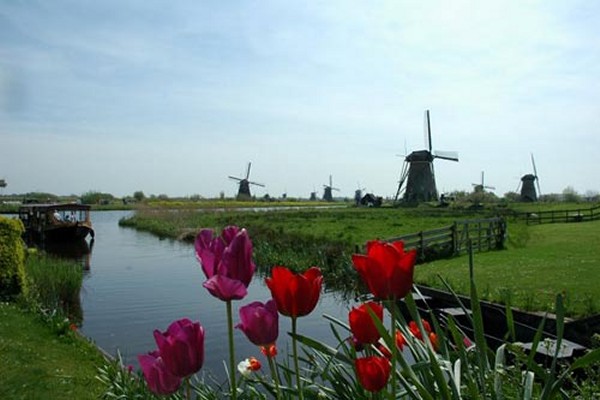
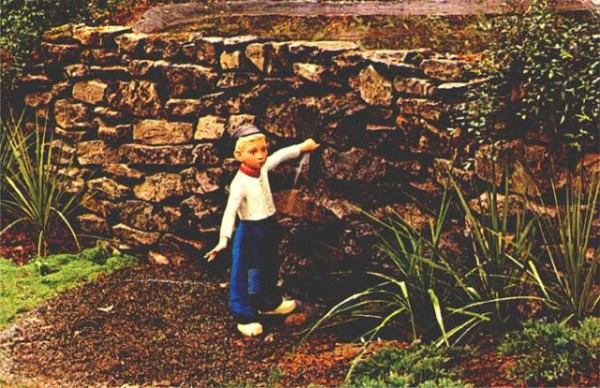
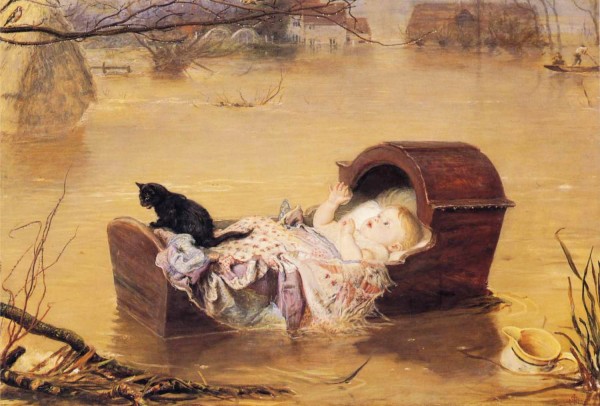 |
|
Amsterdam - Canals, Windmills and Tulips |
 |
|
 |
Day
8: Amsterdam
Netherlands
|
|
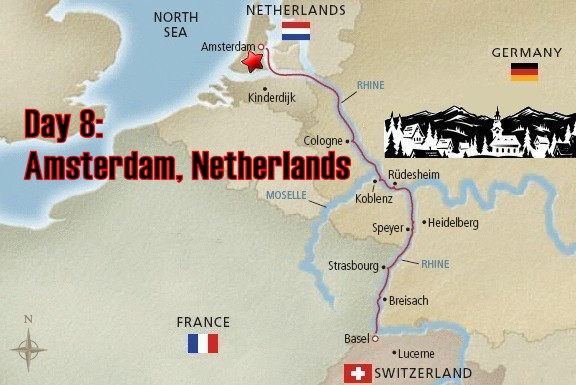 |
|
Amsterdam Highlights
•
Disembark the Viking Kvasir
•
Proceed to airport or explore Amsterdam
About Amsterdam:
Amsterdam, the beautiful capital of the Netherlands, has a
17th century historical atmosphere combined with the
contemporary character of a modern metropolis. This creates
a friendly and relaxed environment. The small scale of the
buildings and the intimacy of the streets, canals and
squares create an atmosphere that visitors find unique.
It is a treasure chest of superb architecture and is famous
for its canals and extraordinary museums. Highlights include
the towers and steeples, considered to be some of the city's
loveliest features.
The city has the highest museum density in the world and is
home to cultural highlights, such as the Van Gogh Museum,
Anne Frank House, Hermitage Amsterdam and the Rijksmuseum
with Rembrandt's world-famous Nightwatch. Other well known
places of interest in Amsterdam are the Palace on the Dam,
the Artis Zoo, Jewish Historical Museum and the Rembrandt
House.
The cultural scene in Amsterdam is rich and diverse. You can
enjoy classical concerts at 'Concertgebouw', one of the best
concert venues in the world, and jazz at 'Bimhuis'.
'Muziekgebouw aan 't IJ' is a cultural melting pot with
different shows every day of the week. Theatre and cabaret
blossom at 'Carré' and City Theatre Amsterdam.
Dam Square
Dam Square is Amsterdam's beating heart. Nowadays Dam Square
In contrast with the old days it is now a very peaceful
square which is home to scores of pigeons and street
performers.
Dam Square has had a turbulent history. Around 1270 a damn
was constructed in this spot in the river Amstel. Dam Square
was once the central marketplace of Amsterdam where
literally everything under the moon was sold.
In 1535 the square was the scene of the Anabaptists' riots.
Less than a century later the loot of the silver fleet was
the reason for a revolt. The troubles that erupted because
the employment benefits were decreased in 1935, also focused
on this square. Towards the end of the Second World War
German soldiers killed innocent citizens here during a
gruesome shoot-out.
In the 1960s and the 1970s students protests took place
here, as did the demonstrations against the war in Vietnam.
It has been quiet on Dam Square in the past few decades. The
latest riots were as long ago as 1980 on the occasion of HRH
Queen Beatrix' investiture in Nieuwe Kerk.
The National Monument on Dam Square was unveiled on 4 May
1956. It was erected in remembrance of those who died during
World War II. Each year on 4 May many dignitaries, including
representatives of the royal family, commemorate the victims
of the Second World War here.
The Royal Palace and the Nieuwe Kerk Amsterdam are also
situated at Dam Square. Other nearby highlights are the Red
Light district, the narrowest house in Amsterdam at Singel 7
and the shopping mall Magna Plaza.
Vondelpark
The central park of Amsterdam is the Vondelpark. This
national heritage monument attracts thousands of people of
Amsterdam every day of the week. Whether you want to sport,
relax, dine and wine or are in search of culture, the
Vondelpark is the place to be.
There's much more to do than enjoying the winding paths,
rose garden and ponds of this English landscape park. The
Vondelpark has a tea house, restaurant, bar, and an open air
theater, where you can witness great performances during the
summer. On King's Day the park turns into the greatest
unregulated market you've ever seen.
The park attracts approximately ten million visitors a year.
Why don't you give it a try too? It's a great spot to relax,
sunbath and watch other people
Architecture in Amsterdam
Amsterdam is a fascinating architecture mixture of 17th
century canals with UNESCO status, works of Dutch architect
Berlage and the architectural movement Amsterdam School and
innovative new projects in the business district The Zuidas
and the neighborhood Eastern Docklands.
The Oude Kerk or Old Church is not just the oldest building
in Amsterdam; it is also one of the most beautiful
buildings. In the 13th century, when the Amstel discharged
into the IJ in this location, fishermen established a small
chapel devoted to St. Nicholas, the patron saint of sailors.
Through the centuries the church evolved into an imposing
monument.
About one hundred years later, when the population of
Amsterdam had grown significantly, a new church was founded
on the Dam. It was called the Nieuwe Kerk or New Church so
the old St. Nicolaaskerk became commonly known as the 'Oude
Kerk'.
This area was 'Amsterdam's living room' for centuries.
Rembrandt registered his intention to marry here (known as
'ondertrouw'), fishermen repaired their nets and Sweelinck
played the organ.
Today church services are still held in the building but it
is also used as a wedding venue and regularly hosts
exhibitions. It is a real attraction for tourists, who
combine it with a visit to the less sacred 'Wallen' red
light district
'Het Scheepvaarthuis' (the Shipping House) was built as a
joint office for six Amsterdam shipping companies. Architect
J.M. van der Mey designed a building that would resemble
their power. The Shipping House was completely finished in
1928.
Highlights of the Shipping House
The Shipping House is one of Amsterdam's best-known
monuments. The reasons are:
•
The
Amsterdam School: the Shipping House was the first completed
building of the Amsterdam School. Characteristics are the
profuse masonry along the chimneys, ridge beams and frames
and the design of the corners.
•
The
decorations: the building is richly decorated with
sculptures and wrought iron, which refer to the history of
shipping in Holland. Symbols include seahorses, dolphins,
waves and anchors.
•
The
mighty entrance: The four oceans (the Indian Ocean, the
Mediterranean, the Pacific and the Atlantic Ocean) are
represented around the entrance. The windows illustrate
Neptune with a globe, the V.O.C. (United East India Company)
and the W.I.C. (the trade with America and Africa).
•
The incredible
stairwell: The most remarkable feature of the interior is
the central stairwell. The staircases have been richly
decorated with shells, octopuses and other figures.
Today the Shipping House is a hotel, which preserved the
monumental aspects of the building. Walk in and discover all
the beautiful details of the building.
Anne Frank Museum
The Anne Frank House is a museum with a story. It's situated
in the center of Amsterdam and holds the hiding place where
Anne Frank wrote her famous diary during World War II. Anne
Frank was a normal girl in exceptional circumstances. For
more than two years she described the events of her daily
life in hiding in her diary.
Anne's original diary along with some of her other notebooks
are on display as part of the Anne Frank House's permanent
exhibition. The collection and temporary exhibitions focus
on the wartime persecution of Jews, contemporary fascism,
racism and anti-Semitism.
See for yourself how Anne, her family and other people were
living while hiding from the occupying Germans. Take into
account, that visiting the Anne Frank House is a moving
experience, which has already touched millions of people
from all over the world
Van Gogh Museum
Vincent van Gogh was a 19th century Dutch post-impressionist
painter. His works were of great influence on 20th century
art. During his life he was little appreciated. He only sold
one work of art. Today the Van Gogh Museum attracts around
1,5 million visitors a year.
No other place in the world has so many paintings of Vincent
van Gogh under one roof. The collection consists of more
than 200 canvases, 500 drawings and 750 written documents.
Together these provide a fantastic insight into his life and
work.
Absolute masterpieces of the Van Gogh Museum are:
•
Van Gogh's
self-portraits,
•
The
Sunflowers,
•
The
Potato-eaters,
•
The Bedroom in Arles.
Apart from the works of Vincent van Gogh, the museum has a
collection concerning Van Gogh's history and works from
artists he befriended or influenced.
Let Van Gogh overwhelm you with his amazing works and find
out how he influenced the art history. Take into account
that the museum is less crowded in the morning.
Rijksmuseum
If you're in Amsterdam for any length of time, you must
visit the National Museum of Holland: the Rijksmuseum
Amsterdam. The National Museum is located at Museum Square,
which is situated in the city center of Amsterdam. The
National Museum, the Rijksmuseum, is home to a wonderful
collection of Dutch art and history. After a visit to the
Rijksmuseum you will have more historical and cultural
awareness and you will have seen some of the greatest Dutch
cultural highlights.
All together the collection of the Rijksmuseum presents the
history of the Netherlands in an international context from
1100 to present. These are a few historical and cultural
Dutch icons you cannot miss:
•
Rembrandt's Night Watch
(de Nachtwacht) is one of the most famous works by a Dutch
master and will steal your breath away.
•
Rijksmuseum has one of
the finest collections with paintings by great masters of
the 17th century, such as Frans Hals, Jan Steen, Vermeer and
Rembrandt van Rijn'.
•
The Rijksmuseum
presents beautiful, luxury dolls' houses, furnished in the
finest detail, dating back to 1676.
•
If you can't make it to
Royal Delft than you can always enjoy some of the finest
Delftware from tea-sets to vases at the National Museum.
Whether you're planning a short or a long stay in Amsterdam,
you must visit the Rijksmuseum. Make sure you come early to
avoid the crowds. Combine the Rijksmuseum with one of the
other nearby cultural highlights, like the Van Gogh Museum,
Stedelijk Museum Amsterdam and Coster Diamonds.
The Heineken Experience
It is not a museum, it is the Heineken Experience. The
former Heineken brewery is equipped with the latest
multimedia to make you see, hear, smell, taste and enjoy
Heineken.
The Heineken Experience starts at the base: the ingredients
and 150 years of brewing craftsmanship. Then you'll get a
4D-experience what it's like to be brewed and bottled. More
interactive fun is followed by a Heineken show. Finally,
you'll end the experience with a well deserved beer.
The Heineken Experience is a fun way to get to know this
world famous Dutch beer. It only takes one and a half hour
and is a great activity if you're with friends.
Canals of Amsterdam
A visit to Amsterdam isn't complete without enjoying the
canals. They are a symbol of Amsterdam and of great cultural
and historical value. In 2010 the World Heritage Committee
decided to submit the 17th century canal ring area in
Amsterdam to the UNESCO World Heritage List.
Though every canal is beautiful and unique in itself, there
are some absolute musts:
•
The
Golden Bend: the canal from 'Leidsestraat' to 'Vijzelstraat'
has the most beautiful and magnificent stretch of canal
houses of Amsterdam.
•
One
view, fifteen bridges: the bridge on the corner of
'Reguliersgracht' and 'Herengracht' has a unique view over
fifteen bridges. Make sure you stand on the side of the
street with the odd numbers.
•
Magere Brug: the 'Magere Brug' (Skinny Bridge) is one of the
most picturesque bridges of Amsterdam. At night the bridge
is romantically illuminated.
•
Canal tour: enjoy the
beautiful canals and canal houses from the water with one of
Amsterdam's many canal tours.
According to UNESCO, the canals are cultural heritage of
"outstanding universal value". The city of Amsterdam also
does its utter best to maintain and protect the canals.
Enough reasons for you to discover the Venice of the North:
the canals of Amsterdam.
Red Light District
While most major cities in the world have a 'Red Light
District', none are quite as touristy as Amsterdam's or its
Red Light District. Amsterdam has three of these districts,
however, 'De Wallen' in the city center is the largest and
best known. This quarter of Amsterdam is one of the oldest
parts of the city.
Since the 14th century the former inner-harbor of Amsterdam
has slowly grown into an area of sex shops, brothels, gay
bars, coffeeshops, peepshows and window prostitutes. The
fluorescent red lights are characteristic for this area.
The Red Light District in Amsterdam attracts many tourists.
This is also stimulated by a tour offered by the local VVV
(Tourist Information Office). The presence of police and
security cameras ensure that 'De Wallen' is one of the
safest areas of Amsterdam.
Shopping
Amsterdam is a great source of inspiration for every
visitor: it has museums, architecture and culinary addresses
and there is always something to do. Amsterdam also draws a
lot of fashion talent, which means you can find a lot of
extraordinary fashion shops here. From alternative budget
shops to big chains and exclusive couture, Amsterdam is the
place to visit for some serious fashion shopping!
City centre: This is where you find the big shopping
streets, like the Leidsestraat, Kalverstraat and
Nieuwendijk. There are many well-known (international)
fashion chains as well as less well known fashion shops.
This is also the district to go for shoe shopping.
Jordaan: This eternally cosy 'people's neighbourhood'
harbours countless small designer shops, ranging from
alternative to exclusive. If you have sophisticated tastes,
the Jordaan is definitely the place to visit. You will be
spoiled for choice!
Zuid: Amsterdam-Zuid has chic shopping streets like the PC
Hooftstraat, Van Baerlestraat and Beethovenstraat. Here you
will find a wide selection of international top brands. If
you have deep pockets, you can fill your wardrobe to
bursting here.
De Wallen: This old district - which is mainly known as the
'red-light district', boasts several special designer shops
concentrated around the Oudezijds Achterburgwal. The
district is called Red Light Fashion and shops like CODE
come highly recommended.
The Begijnhof
The 'Begijnhof' is one of the most beautiful places in
Amsterdam. It's an inner court that dates from around 1300
with typical Amsterdam-style houses. The Begijnhof has a
fascinating history with many historical events, the
sisterhood of Catholics and even miracles.
The women that joined the sisterhood of Catholics were
called 'begijnen'. These were women who lived like nuns
without ever taken an oath to God. This sisterhood of
Catholics cared for the sick and gave education to the poor.
They had their own set of rules and were for instance
allowed to leave the sisterhood to get married.
The Begijnhof is open every day between 9 a.m. to 5 p.m.
Take into account that the Begijnhof is private possession
and a place of silence. You can join a tour at the local
tourist information office (VVV) and learn more about the
miracles that have taken place here.
The ring of canals in Amsterdam is dotted with several
unusually narrow houses. One of the most famous is the
building at Singel 7, which is often labeled as the
narrowest house in the world. With a width of only one meter
(about 3 ft., 3 in.), the house is barely wider than its own
front door.
In all fairness, it should be said that this is actually the
rear façade of a house; the front is a bit wider. A better
title for the house at Singel 7 would be the house with the
narrowest façade in the world.
At Kloveniersburgwal 26 stands a house with a beautiful
cornice gable, about 8 ft. wide. This house is known as the
"Kleine Trippenhuis," or "the House of the Mr. Trip's
Coachman". Oddly enough, this house is right across the
street from the Trippenhuis at number 29, a building that,
with its width 72 ft. 2 in., is the widest house in
Amsterdam.
It was built in 1660 by the very wealthy brothers Lodewijk
and Hendrick Trip. As the story goes, one day Mr. Trip's
coachman proclaimed, "Goodness, I would even be happy with a
house that is as wide as my master's front door." Mr. Trip
heard this and made sure that the coachman got his wish.
For even more "narrow" experiences, visit the narrowest
house in Europe, located at Oude Hoogstraat 22. This tiny
house features a typical Amsterdam bell-gable. The façade is
a mere 6 ft., 7.5 in. wide, and the house itself is 19 ft.,
8 in. deep.
Measuring only 3 ft., 3 in. in width, the Trompettersteeg is
the narrowest street in Amsterdam. The street is located in
the Wallen districts, and prostitutes pose behind their
windows on both sides of the street. Tour guides love to
take tourists down this street, thus making it one of the
most crowded streets in Amsterdam.
Keukenhof
Gardens, the Tulip Paradise
If you can bear to rip yourself away from the Red Light
District, you might consider flowers instead. How
about a visit to Keukenhof ("Kitchen garden")? Known
as the Garden of Europe, Keukenhof is the world's largest
flower garden.
Springtime is the best time to visit. You won't
believe the colorful display of tulips and other springtime
bulbs in bloom at the magnificent Keukenhof Gardens!
Keukenhof is situated near Lisse, a suburb of Amsterdam 17
miles outside the city. According to the official website
for the Keukenhof Park, approximately 7 million flower bulbs
are planted annually in the park, which covers an area of 32
hectares.
Stroll down winding paths lined with millions of blossoming
tulips, narcissis, daffodils, hyacinths and bluebells and
dotted with lovely greenhouses, brooks and shady ponds.
Bring a picnic lunch or grab a bite from a refreshment stand
for a relaxing lunch among the flowers.
|
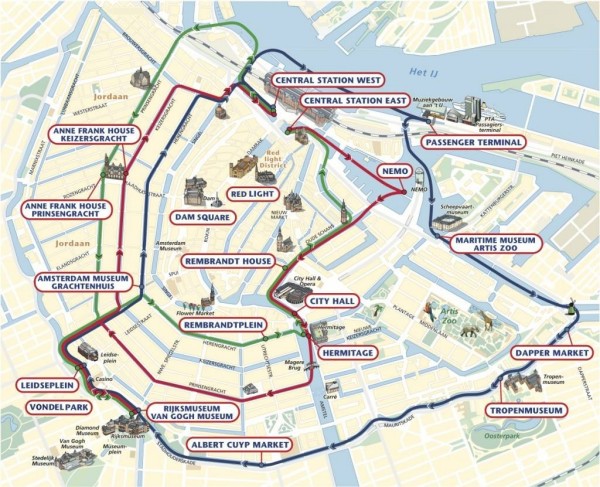
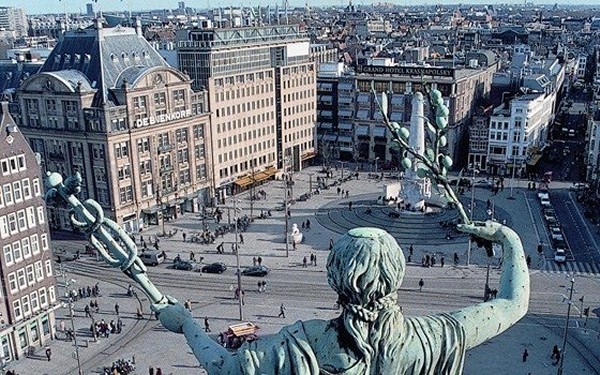
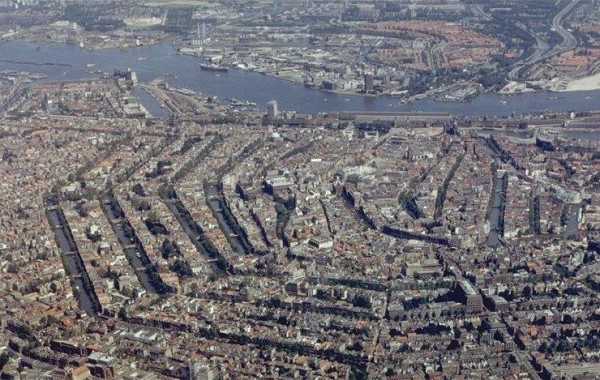
Amsterdam is known as Waterworld. It features the most
extensive canal system in the world
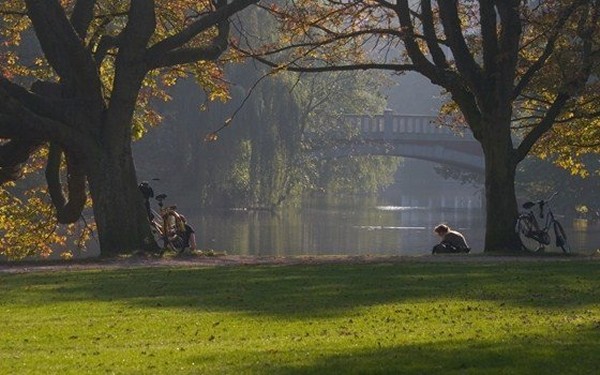
Vondel
Park
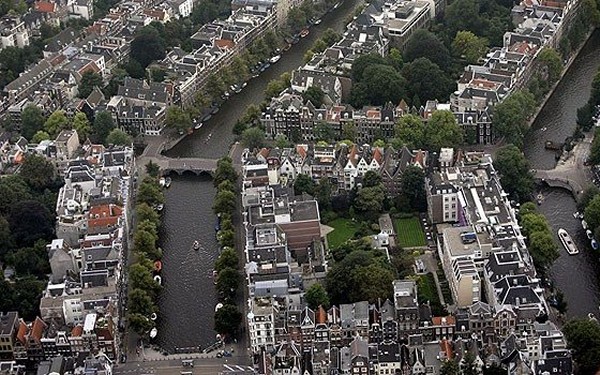
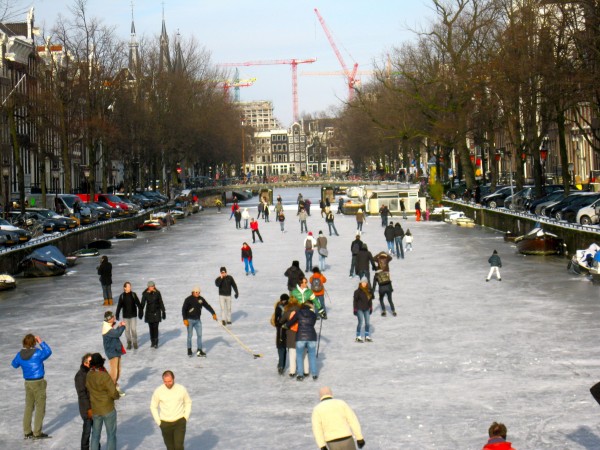
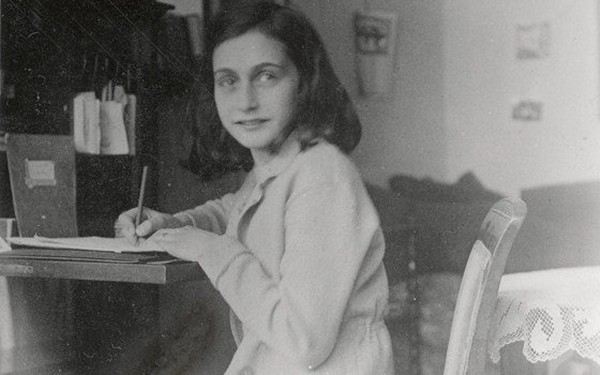
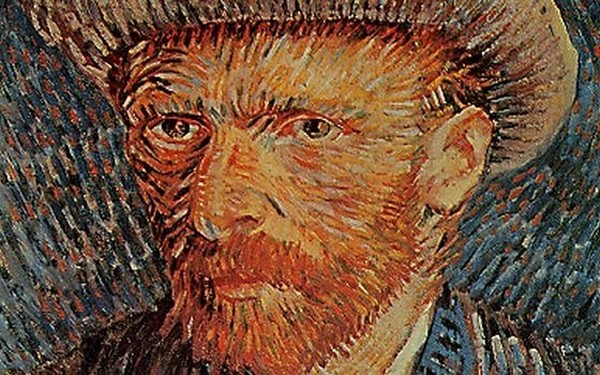
Vincent Van Gogh
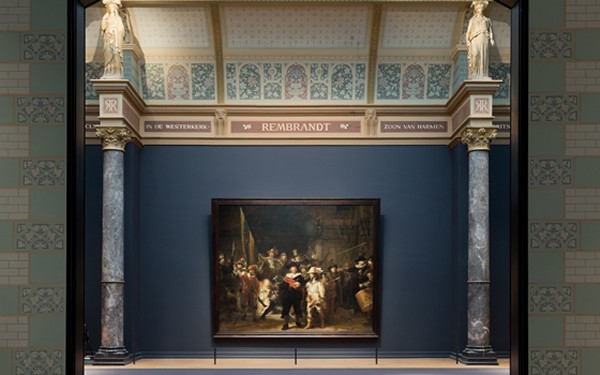
Rembrandt at the Rijksmuseum, Amsterdam's answer to the
Louvre
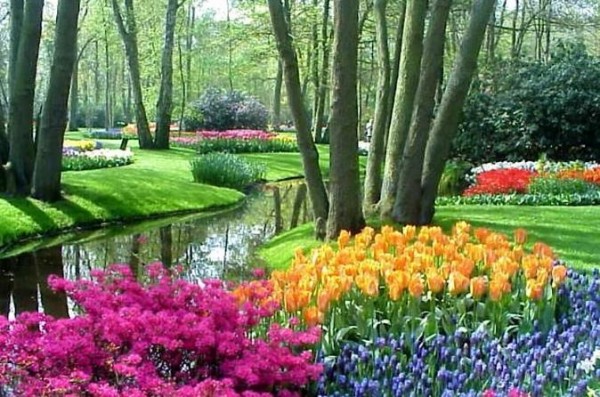
Amsterdam Gardens
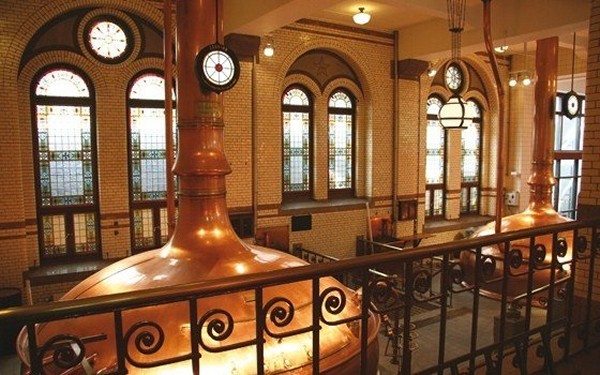
Heineken Brewery
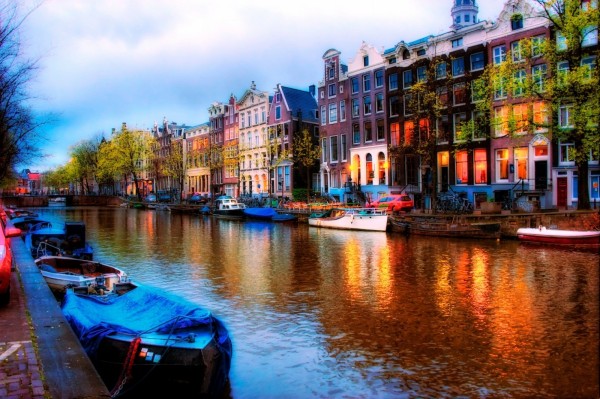
Have
boat, will travel
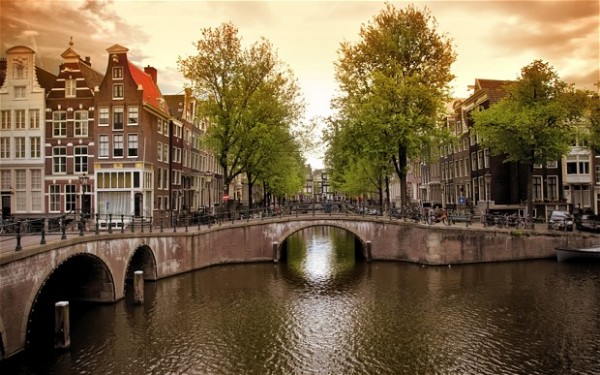
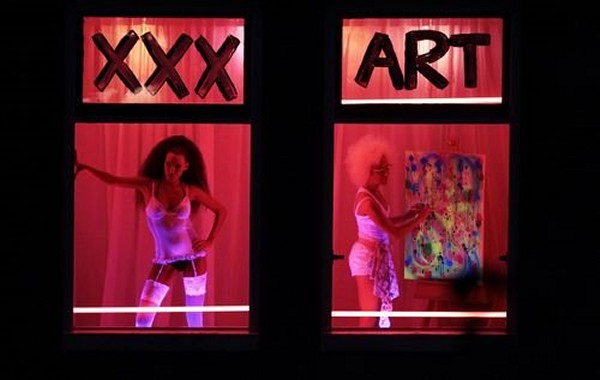
Amsterdam
is said to have the world's most famous Red Light District
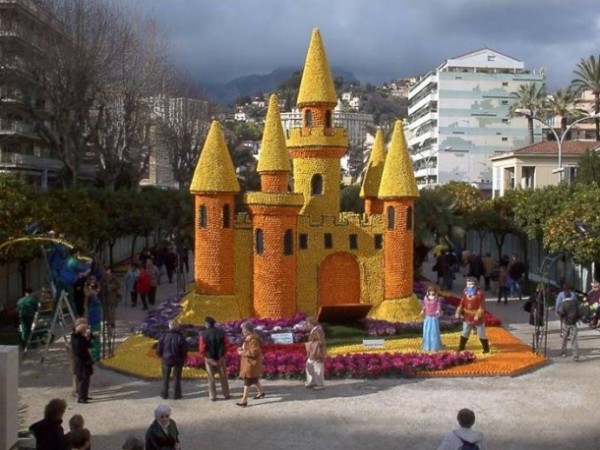
This
tulip castle was part of the Amsterdam Tulip Festival
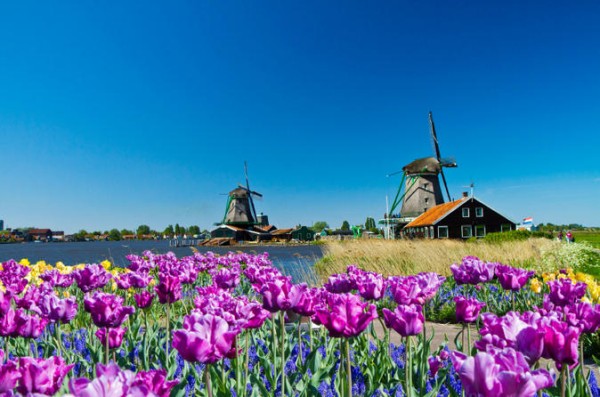
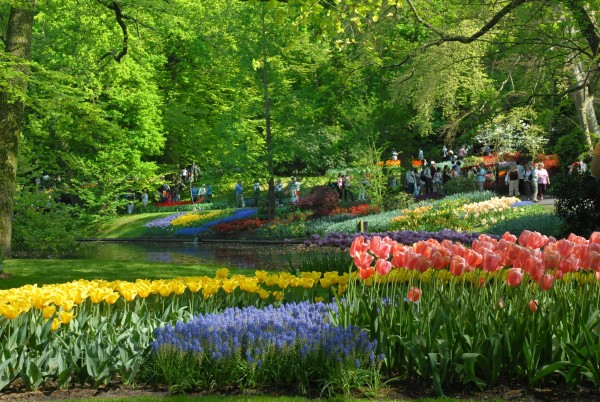
Keukenhof Gardens
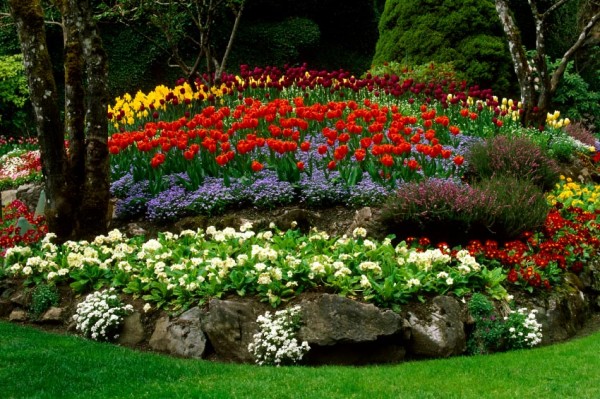 |
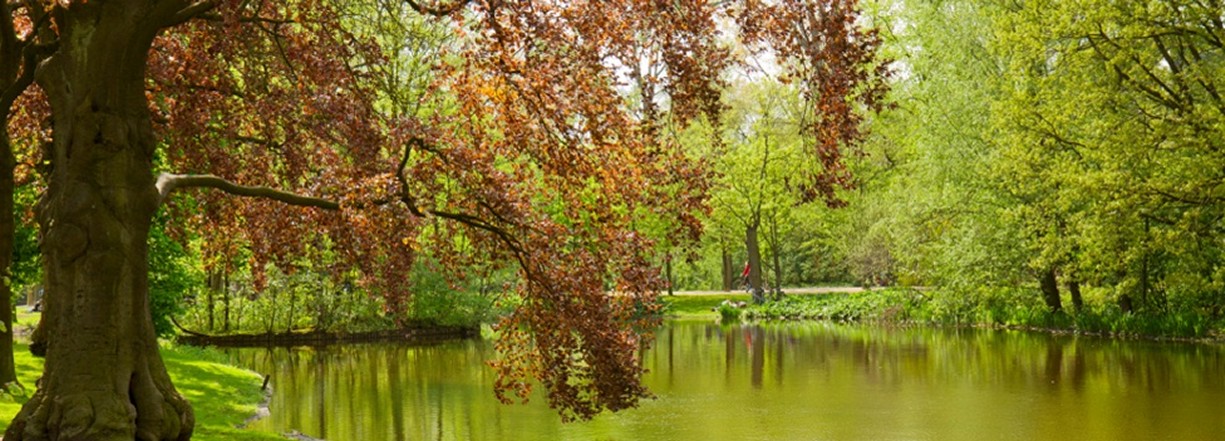
Post
Cruise Trip:
Amsterdam
|
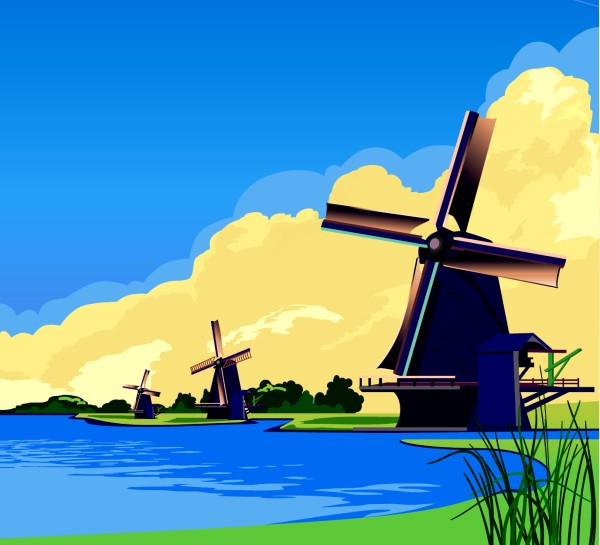 |
|
Marla's Note:
To be honest, I
haven't decided what I want to do about Amsterdam yet.
For the moment,
you can assume Rick and I are visiting Amsterdam at the tail
end of our trip.
Give me some
time to research hotels to stay at and places to visit.
I am fairly sure one of our days will be spent at Keukenhof
Gardens to see the tulips!
Perhaps those of
us who want to continue on can stay in a hotel together and
take it from there. We can all scatter through the
city by day and regroup at night to do things together.
More info to come.
|
 |
Cruise Critic
Editors chose Viking as the Best River Cruise
line in 2013.
"Viking River
Cruise Line’s Longships are the best new river
ships. Sixteen new
Viking Longships were
launched in March of
2014.
They are identical, so all win for their
sleek lines, stunning atrium, balcony cabins
with full-sized verandahs, and hotel-style
suites.
The Aquavit
Terrace, an indoor-outdoor casual eatery, is a
dedicated alternative restaurant.
And the ships are state-of-the-art when it comes
to engineering, with hybrid engines, solar
panels and even an organic herb garden. "
|
Marla's Note: The Kvasir is a brand new ship. It
sets sail in March of 2014.
Viking names its ships after Viking Gods. In case you aren't
current on your Norse mythology, Kvasir
was the Viking God of Knowledge. Extremely
wise, Kvasir traveled far and wide, teaching and spreading
knowledge.
Review of the Kvasir:
The Kvasir is a super sleek ship.
It has large windows that bring in an abundance of sunlight.
Its design is contemporary with classic Scandinavian touches
that maximize light and space. Accommodates 190 passengers
at full capacity and a crew of 45.
It has quiet, environmentally friendly hybrid engines, solar
panels and an organic herb garden on the large sun deck.
The all-new Aquavit Terrace—an indoor/outdoor area at the
bow of the ship for viewing, relaxing and casual dining.
The Aquavit Terrace’s indoor/outdoor configuration has glass
walls that open to reveal scenic views on warm days. On
cooler days, the expansive windows still provide spectacular
views. The adjoining Observation Lounge has expansive
windows that showcase the river views and plenty of
comfortable couches and cozy chairs. While the lounge is
large, it can feel crowded at times and it is advisable to
get there early for a spot during lectures and briefings.
The Middle Deck lobby is a striking, light-filled, welcoming
area with colorful artwork and a staircase leading up to the
Observation Lounge. The concierge desk and a small boutique
offering Viking River gear and books are in the reception
area on the Middle Deck along with coffee and tea stations
open 24 hours a day, with cookies served in the afternoons.
The ship’s library had a great selection of
itinerary-related books and two computers with free Internet
access
Accommodations: The 95 outside rooms and suites aboard the
Viking Kvasir have a functional
modernity and neutral color palette. The spaces are targeted
to today’s traveler, with plenty of plugs (including
American outlets), reading lights, a hair dryer, a telephone
and a refrigerator.
Each stateroom on the ship features plenty of storage, from
the typical large space under the bed for luggage to a
spacious closet and eight separate additional drawers. Extra
pillows are available. Bathrooms are small but comfortable,
with L’Occitane amenities, a bowl-style sink and plenty of
shelf space for toiletries. There’s also a large vanity and
mirror
French balcony staterooms featuring floor-to-ceiling sliding
glass doors
Turndown service is offered each night in addition to
morning housekeeping, and printouts of the next day’s
itinerary and other important information. The flat-screen
TV provides a sizable selection of included entertainment,
from itinerary-themed movies and documentaries to Hollywood
hits
Fine cuisine, exemplary service and immersive, culture-rich
itineraries.
Al fresco dining aboard Viking Kvasir--
Imagine waking as the mist rolls off the river,
stopping in the lounge for a frothy cappuccino, and heading
out to the Aquavit Terrace to silently cruise through the
early morning light. That is one definition of a Viking
happy hour.
Another
one is in the more traditional sense: unwinding in the late
afternoon with a pint of beer or glass of wine, chatting
with friends and enjoying a delicious light bite. With the
Aquavit Terrace equipped with grills and plentiful seating,
each of these al fresco “happy hours” will be yours to
indulge in.
Fine dining aboard Viking Kvasir:
The chefs create a variety of tasty offerings for you, with
freshly prepared seasonal local vegetables, European
specialties adapted to satisfy the tastes of the passengers,
and homemade soups prepared daily. For breakfast, choose
from selections of pastries,
cereals, breakfast meats, egg dishes, fresh fruit and
selected cheeses. At lunch, select from the soup and
sandwich bar, or a choice of entrées and dessert. And for
dinner, you are treated to a five-course gourmet menu with
regional specialties. You can also select from regional
wines to perfectly complement your meal.
There are two main dining areas: a large traditional
restaurant and the Aquavit Terrace, which serves a more
casual breakfast and lunch buffet daily. Seating is open
All meals aboard are prepared by local chefs under the
guidance of Viking's European management team
Service is lighthearted and seamless, with a wait staff that
remembers individual preferences. The dinner menu has a
large selection of rotating daily specialties from the
region, though simple chicken and fish are always an option,
as well as several dessert choices. A buffet is always
offered at breakfast and lunch, with hot items to order
All meals, coffee, tea, soft drinks, house wines and beers
with lunch and dinner are included. A Silver Spirits
beverage package can be ordered for those desiring a wider
selection of premium wines and beers. Complimentary bottles
of water are available in each stateroom and refreshed each
day. There also is no corkage fee for those who find a great
bottle of wine ashore.
On embarkation day, while the crew is preparing staterooms
for the arriving guests, you can relax in the ship’s lounge
or leave your luggage with the staff and explore Avignon on
your own. You will be given access to your stateroom around
mid-afternoon, at approximately 3:00 p.m. If you arrive
during lunchtime, a light lunch buffet will be available in
the lounge
2015
Rhine River Cruise at a Glance
Included Features:
•
8 day cruise with
river-view stateroom
•
6 guided tours with audio headset
•
All meals: 7
breakfasts, 6 lunches, 7 dinners, featuring regional
specialties
•
Welcome Cocktail Reception and Dinner
•
Captain's Farewell Dinner
•
Visit 6 UNESCO World Heritage Sites
•
Old World Highlights: Dutch cheese and jenever tasting,
Alsatian
Flammkuchen
cooking demonstration
•
Culture Curriculum:
German language lesson, The Dutch Masters, Travelers
Along the
Rhine, The European Union
|
Group Pricing is
as follows: |
|
Category A:
|
Veranda Upper Deck 205 sq.
ft. full-size veranda |
$3480.50 per person |
|
Category B:
|
Veranda Middle Deck 205 sq.
ft. full size veranda |
$3280.50 per person |
|
Category D:
|
French Balcony Middle Deck
135 sq. ft. |
$2930.50 per person |
|
Category E:
|
Standard Riverview Main Deck
150 sq. ft. |
$2330.50 per person |
|
Category F:
|
Standard Riverview Main Deck
150 sq. ft. |
$2230.50 per person |
|
|
Marla's
Special Note:
For
any of our 2014 Rhone River Cruise guests, there
is a $200 per person discount on top of our
group rate.
|
Staterooms are
confirmed and cabin numbers are assigned when a deposit of
$500 per person (plus travel insurance, if applicable) is
received.
I encourage you to confirm your cabin as soon as possible.
The pricing that I am offered will be recalled when the the
ship occupancy level within that category is classified as
"sold out".
All bookings must be made through Marla Archer.
|
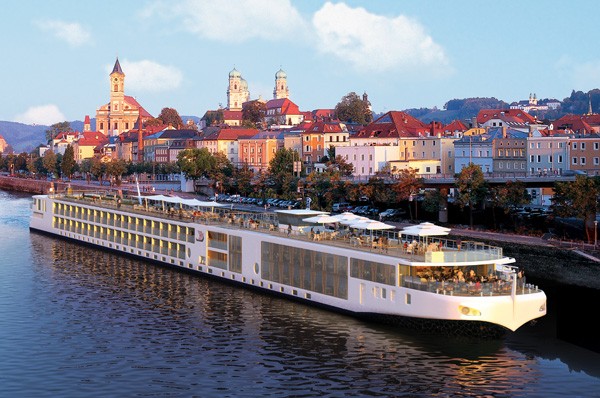
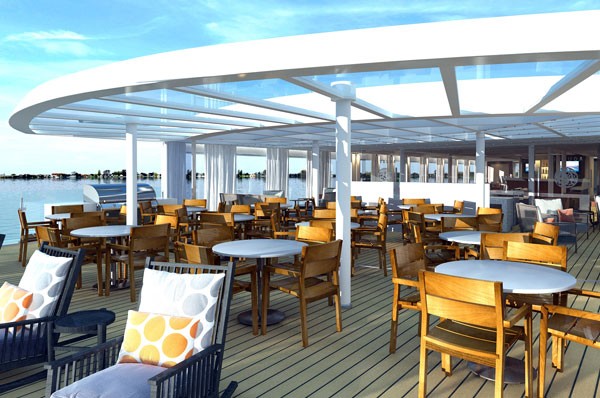
Aquavit
Terrace
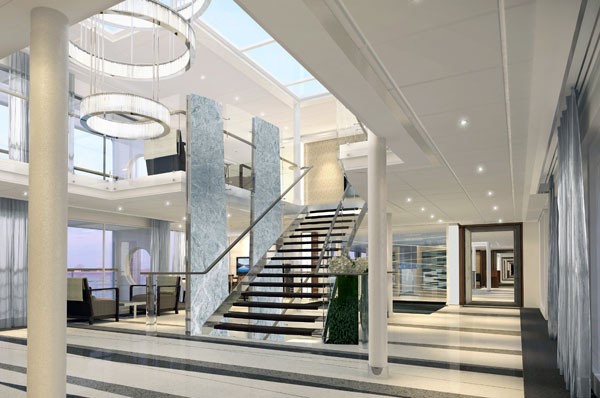
Main Lobby
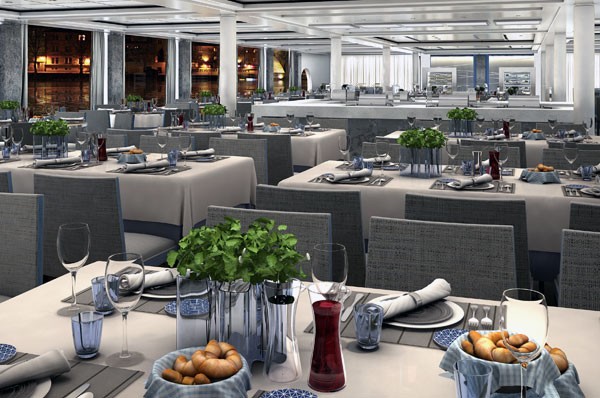
Main
Dining Room
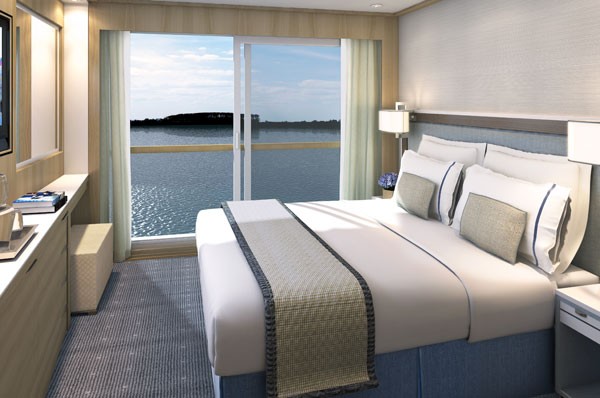
French
Balcony

Dance Area
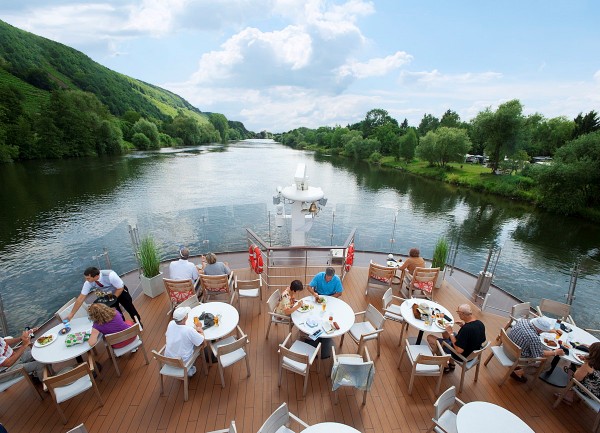
Outdoor
Dining Area |
A Chance to See
the World from a Very Special Point of View
|
 |
Rick Archer:
As I wrote this article about the
Rhine, I could not help but remember of a humorous exchange
I once had with a former girlfriend about a cruise trip to
the Alps.
This story took place five years ago.
I began when I received a request to help a couple named
Richard and Mary learn the Viennese Waltz in preparation for
their vacation trip to Austria.
I
never revealed this, but teaching that lesson turned out to
be a bad mistake. At the time, I could barely contain
my envy. Listening to Richard and Mary talk with
excitement about their trip drove me absolutely nuts.
The thought of NOT seeing a place like Austria, one of the
most spectacular countries in the world, was more than I
could bear.
Tyrolia, Innsbruck, Salzburg, Vienna, the Austrian Empire,
the Sound of Music, the Blue Danube, the Viennese Waltz.
OMG!
Just thinking about it all made me feel sick. I
decided the only way I could deal with my frustration would
be to share my pain in the SSQQ Newsletter. So
here is what I wrote.
The
May 2009 SSQQ Newsletter
Issue Three
Written by Rick
Archer
Thursday, May 14, 2009
DANCING
THE VIENNESE WALTZ IN AUSTRIA
From: Mary
Sent: Wednesday, May 06, 2009 4:27 PM
To:
dance@ssqq.com
Subject: Private Lessons -
Austrian type of Waltz
Rick, after enjoying
our two months of East Coast Swing lessons at
SSQQ earlier this year for our daughter's
wedding, my husband Richard and I could be
considered advanced beginner or intermediate
level swing dancers.
Now we are traveling to Austria in mid June of
this year. We
wanted to have some private Waltz lessons to get
us up to speed in short order. Is there anyone
who can help us out in this regard?
Thank you
for your help, Mary & Richard
RICK ARCHER'S
NEWSLETTER NOTE:
Now doesn't that sound like fun?
Richard and Mary are
going with a group to Austria.
On one of the
nights, they are supposed to have a class in
"Viennese Waltz" with a dance to follow.
As you can see,
Richard and Mary decided the smart thing to
do was to get a head start.
I
enjoyed helping them get ready
to Waltz, but now I am really
envious!
Marla needs to schedule a cruise to Austria.
Please pester her to do so.
|
I was just teasing about Austria of course. I was
fully aware that Austria is a land-locked country in Europe.
I
never expected anyone would bother to reply, but I was
wrong. Indeed, someone did reply.
From:
Janet
Sent: Friday, May 15, 2009
12:11 AM
To: dance@ssqq.com
Subject: get out your atlas,
dodo
A cruise to
AUSTRIA???
Are you out of your mind?
Did you know that
Austria
is landlocked and not a cruising
destination????? Get
out your atlas,
babe, because you made
a slight blunder on that one!
Hint to Rick....here's a
word for you: IMPOSSIBLE.
Cruise destinations all have large bodies of water associated with
them...you know, so that a
REALLY big boat can dock
there.
Even Noah's Ark isn't going to make it to Vienna
!!
|
So who is this 'Janet'
person who takes delight in taunting me?
Janet is my former
girlfriend from 25 years ago. We parted friends and
have stayed in touch over the years.
Back when we dated,
Janet and I had fun matching wits. Janet never could
resist giving me a hard time. I remember Janet was
exceptionally good at finding ways to tease me. Now,
as one can see, Janet hasn't lost her touch.
At this point we
resumed our verbal sparring for old times sake.
From:
Rick Archer
Sent: Friday, May 15, 2009
11:18 AM
To: 'Janet'
Subject:
RE: get out your atlas, dodo
Dear Janet,
Regarding
the cruise to Austria, why do you have so little
faith in me? I just said that to provoke
people and have some fun.
I never thought you of all people
would believe I was that
stupid.
I not only know where Austria is, I know that it
is surrounded by Switzerland, Germany, Italy,
Hungary, the Czech Republic
and a couple Balkan countries… but with a
skeptic like you I doubt I will convince you of
anything.
I assume you believe me when I
say I know where Austria is?
On the other hand, knowing you,
maybe not.
;-)
|
From:
Janet
Sent: Monday, May 18, 2009
10:31 PM
To: Rick Archer
Subject: Re: get out your atlas,
dodo
Okay, okay okay, I'll give it up. I was only
trying to yank your chain anyway. However, a wee
bit of me still
suspects that you momentarily mistook Vienna for
Venice or Austria for
Australia.
Not that I doubt your geographic brilliance, but
we all make mistakes sometimes...especially as
we get older. And God knows
you are getting older.
So any time you want to come clean on that, let
me know. I won't think any less of you. (I hope
you are laughing here)
Very good on the knowledge of
Austria's surrounding countries...
but we all know
you could have checked
it out a bit on any map.
Therefore it does not
count as real genius or any
conclusive measure of your geographic
intelligence. You
will have to blow me away with something
better than that.
By the way, did anyone else call you on this
glaring error or did
everyone just think you knew what you were
talking about given your superior abilities at
naming capitals of the world?
And is anyone
pestering your wife for a cruise to Vienna?
|
From:
Rick Archer
Sent:
Tuesday, May 19,
2009 11:05 AM
To: 'Janet'
Subject: RE: get out
your atlas, dodo
No one to my knowledge is pestering Marla for a
cruise to Vienna.
That said, Janet, I promise you if Marla ever
figures out how to schedule a cruise trip to
Vienna, I will get down on my knees and worship
her even more than I already do now.
|
|
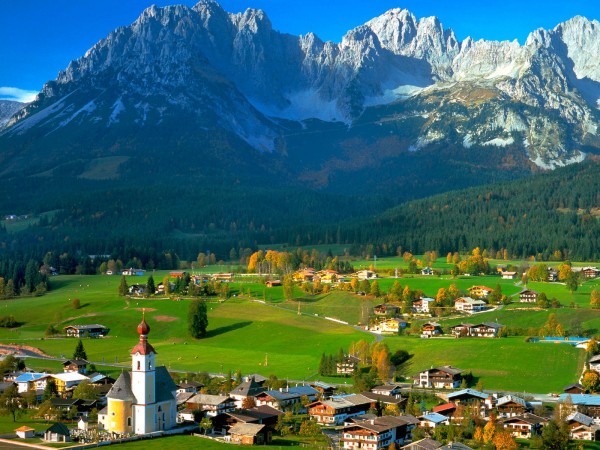
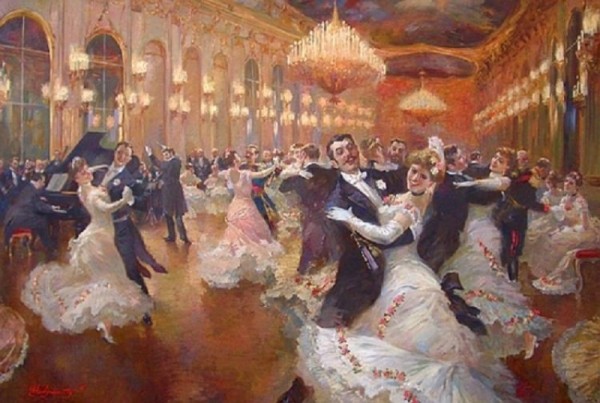

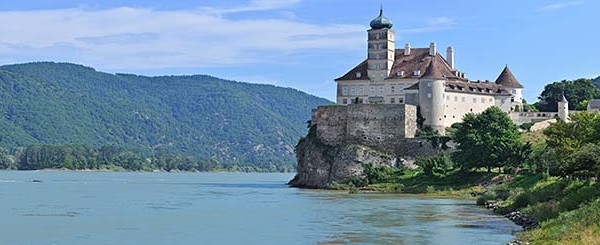
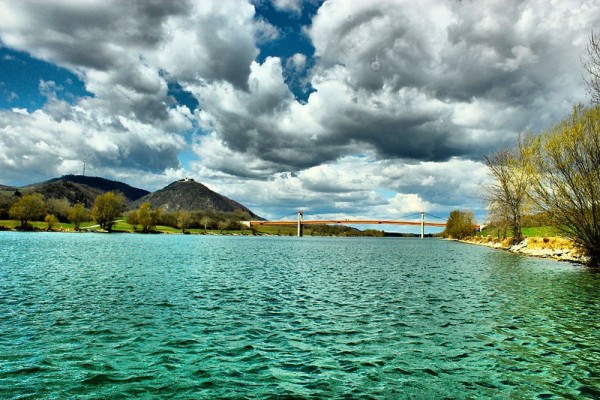
The
sparkling waters of the Blue Danube
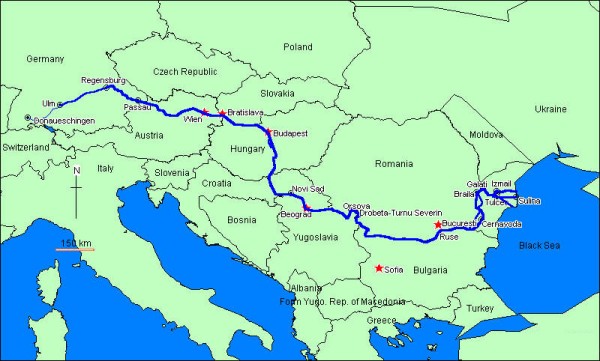
The
Danube stretches all the way from Germany's Black Forest to
the Black Sea.
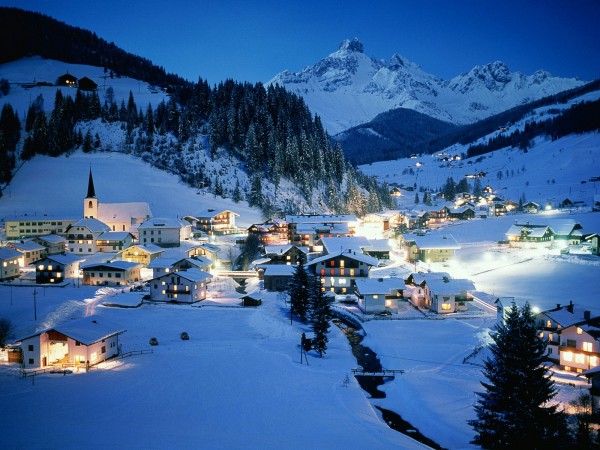
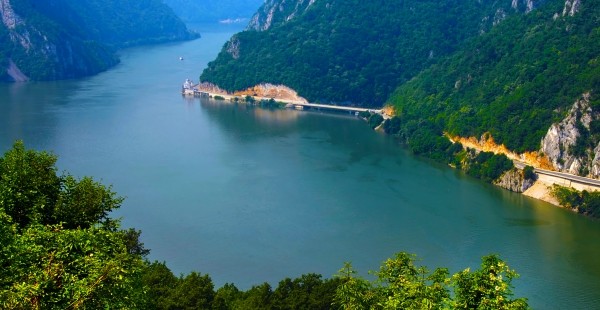
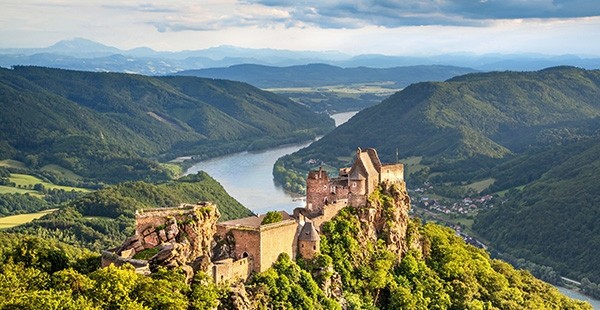 |

|
Here's a
Word for You: "Impossible"
My exchange
with Janet took place back in 2009. As one can guess, I had
never even heard of a 'River Cruise' in those days.
That changed in early 2013 when Viking Cruise line began running
Sunday morning commercials on CNN.
Those ads showed a long,
slender ship sailing down a lazy European river amidst stunning
scenery. A picture is certainly worth a thousand words; I sat
up and took notice. That vision opened my eyes to
possibilities I had never imagined before.
Unbeknownst to me, from her
comfy chair four feet away, Marla was watching those same ads with
an equal amount of interest and curiosity.
One day I finally couldn't take
it any more. I had to say something or go crazy. "Marla,
have you ever considered taking us on one of these river cruises?"
Marla smiled and nodded.
"I think about it all the time!"
Marla said the problem was the
cost. Most of these long ships carry 150-200 passengers, not
the same as the 3,000-6,000 ocean-going behemoths. Marla had
no idea if our cruise customers would be willing to support this new
concept.
Then Marla added, "But I am
more than willing to give it a try!"
Marla had just committed to a
new gamble. Now I smiled too. I deeply hoped she would be as
successful with this new feature as she had been with her cruise
intuition in the past. I really wanted to go on a river
cruise!
One Step at a Time
One of my favorite sayings is
the Chinese proverb "Journey of 1,000 miles begins with one step".
I have watched with pride as
Marla has taken one cautious step after another towards increasingly
ambitious cruise destinations.
In my opinion, Marla has
consistently made the right moves. However, that doesn't mean
she was always sure she was doing the right thing. I am the
only person who has seen the fear. I would watch Marla worry
herself sick that this 'next step' might be biting off more than she
could chew.
We took 101 people on our first
big cruise in 2001. I was the one who organized that trip, but
I haven't organized one since.
Why not? Well,
I met Marla
on that cruise. Once I realized how sharp her business
instincts were, I had the sense to step aside.
Marla's first big decision came in 2002 when she decided to expand
our next cruise trip from 4 days to 7 days. To do this, Marla
had to book the more expensive Royal Caribbean cruise line over a
cheaper Carnival cruise. This decision was risky.
Over the years, Carnival has
carved out a 50% market share using an obvious technique - they
undersell everyone.
It is a source of great
irritation to all travel agents that "price sells". The travel
agents have known for some time that people get what they pay for,
but the general public had no idea. Carnival's cost-cutting tricks
were largely hidden from the public eye. Besides the travel
agents, only the most experienced cruisers knew the truth.
That came to an end in 2013.
As we all know, 2013 was the year that Carnival's tendency to cut
corners finally caught up with them. There had long been
rumors in the industry that Carnival sacrificed 'quality' for
'quantity'. However it wasn't until the neverending headaches
of 2013 made headlines that Carnival's cutthroat business practices
finally came to light.
None of this was known in 2002.
All Marla knew was that her Royal Caribbean cruise cost people
several hundred dollars more than Carnival would have charged.
How would they react?
To her relief, Marla's more
expensive
2002 cruise sold well. Even at the higher price, she
still managed to get 80 guests.
Still Marla worried about the
price difference. Some of her customers pointed out that
Carnival seemed like a much better bargain. So in 2003, Marla
booked a shorter, less expensive trip aboard Carnival. As
Marla expected, the lower price got good results. The group
responded well with 144 passengers.
The Big Stumble
In 2004, Marla took a new
gamble. Why not try a slightly different trip than usual
Caribbean Jamaica-Cayman-Cozumel Triangle? She noticed a Royal
Caribbean cruise trip to
Mardi
Gras. The trip sounded interesting. We could use
our cruise ship as a floating hotel.
Unfortunately, Marla got mixed
results. Although we had a blast roaming the crazy streets of
New Orleans, we only got 40 people for the trip. Marla was
disappointed more people didn't join.
Marla believed the 2004 Mardi
Gras numbers were lower due to cost. Marla took a long look at
the numbers. Carnival 2001:
100.
Royal Caribbean 2002:
80.
Carnival 2003:
144.
Royal Caribbean Mardi Gras:
40.
Carnival had delivered
244 people
while Royal Caribbean delivered
120,
a clear 2 to 1 edge. Marla reacted accordingly. Marla
decided to book a less expensive Carnival trip for our 2004 summer
dance cruise.
That decision backfired badly.
2004 would become the only serious misstep I have ever seen Marla
take. As the months passed, no one was signing up for that
summer Carnival trip. No one. This upcoming trip was
dead in the water.
Marla was sick in her stomach.
She was also mystified. How could we go from 144 to
practically zero? It is a terrible thing to be a leader and
turn around only to discover no one is following.
Marla was operating in an
information vacuum. In a situation oddly reminiscent to the
fairy tale about the Emperor's clothes, no one said a word to Marla
for fear of hurting her feelings.
I remember watching Marla tear
her hair out. Finally Marla couldn't take it any more. She had
to know the reason. After some probing, Marla found one person
with the guts to confide in her. Marla's friend told her that
the beautiful Royal Caribbean ship in 2002 had spoiled everyone.
Everyone agreed that the RCCL ship had been awesome.
On the other hand, last year's
2003 trip had taken place on a truly miserable Carnival ship.
No one ever wanted to sail on that awful ship again. That
included me. At the time, I wrote this about the
Jubilee:
"In
my opinion, the Carnival Jubilee lost in almost every category
when compared to the ship we sailed on last year, Royal
Caribbean's Rhapsody."
Now that they had a chance to
compare, the cruise group decided they would much rather pay more
money if it meant sailing on a better ship. Too bad they didn't
bother telling this to Marla.
Marla was absolutely
flabbergasted. Why didn't anyone say something? All they had
to do was tell her.
Back in the Saddle
Again
Well, thank goodness, the cat
was finally out of the bag. Now Marla went into action.
Marla quickly cancelled the July 4th Carnival trip and booked Royal
Caribbean for a late September trip instead. Her move worked
like a charm; Marla got 125 guests for the
September
2004 dance cruise.
In 2005, Marla took her next
big step. But it wasn't easy. Once burned, twice shy.
In addition to the popular annual dance cruise, Marla decided to
book a cruise to Alaska.
This felt like a real gamble to her since last year's Mardi Gras
cruise had been a so-so success at best. Since the Alaska trip
was much more expensive than our usual trip to Cayman and Cozumel,
Marla was terrified.
Fortunately, to her relief, the
trip sold like hot cakes. We took 73 people to
Alaska
in 2005. Marla was tickled pink. This Alaska trip
confirmed her hunch that her customers liked using cruise trips to
see the United States. Consequently 2006 saw a trip to
New
England and 2007 saw a trip to
Hawaii.
2008 posed a new problem.
Marla had exhausted her best United States cruise options. Now
she turned her eye to Europe. This was a big step up in price.
The dollar was getting pounded against the euro. Air fare was
prohibitive. Would her customers support a cruise trip in
Europe?
You betcha they would!
The response was very favorable. Rat a tat tat, in rapid order we
took three straight trips to Europe.
Greece and
Turkey 2008 was our first trip.
We went to the Eastern Mediterranean.
This was followed by the fabulous
Barcelona
2009 trip to the Western Mediterranean, my favorite cruise
ever. Then came the
Oslo 2010
trip to Northern Europe.
Marla took a European breather
in 2011. We went to the
Virgin
Islands in the Eastern Caribbean instead. However, in
2012 Marla was back with her most ambitious (and expensive) cruise
trip to date:
Russia and
Scandinavia.
That Russia trip was very
special. Every place we went was spectacular. St.
Petersburg, Tallinn, Copenhagen, Helsinki, Stockholm. Marla
realized the more she saw of Europe, the more of Europe she wanted
to see.
Viking River Cruises
It was now 2013. As Marla
stared mesmerized at the Viking commercials on TV, she smiled at the
name 'Viking Cruise Line'.
Our 2012 trip to Russia had led
to an interesting discovery. Marla and I had long wondered why
there are so many blonde, blue-eyed Russians. Our trip to
Russia answered that question.
Marla and I already knew the
Vikings were incredible seafarers. There is mounting evidence
that the ancient Vikings made it all the way to Greenland and Canada
in their ocean vessels.
What we didn't know was the
Vikings were absolute wizards at using rivers for exploration.
(History
of Russia)
In preparation for our trip to
Russia, Marla and I learned the Vikings were largely responsible for
populating the northwestern regions of Russia such as Moscow and
Saint Petersburg. So how did this happen?
The Vikings developed a special
type of narrow longboat that could easily sail down Russia's
spider-like network of rivers. Known as "Dragon Ships", these
vessels were perfect for navigating the many rivers of Russia.
The Vikings were not only
fearless, they were really clever. Whenever they came to the
end of a river, they sent out scouts in every direction. Sure
enough, at every dead end, at least one of the scouts would return
with the report of some new river 30 miles to the east or 40 miles
to the west.
At this point, the Viking crew
would lift their boat up on their shoulders and carry the
lightweight ship 40 miles to the next river! When you can
carry your ship, who needs canals?
Once the Vikings discovered the
short cut to the Volga, the longest river in Europe, they
were off to the races.
One river route discovered by
the Vikings took them 900 miles from the Neva River near the
Baltic Sea (where St. Petersburg is located today) all the way to
the Black Sea with only two short portages. You can see
this route on the map. It shows the city of Novgorod on
the Volkhov River is only about 30 miles from the headwaters
of the fabled Volga River.
Another route shown on the map
took the Vikings 1300 miles from the Neva River to the
Caspian Sea with only two portages.
Think about how brave these men
were. Using this technique, the Vikings made it all the way
from Sweden to the Black Sea, the Caspian Sea, and the Mediterranean
Sea. Talk about far from home! How incredible is that?
Taking the Next Step
Forward
Now as Viking Cruise Line
tempted Marla with those river cruise commercials, she felt the
siren call of the Lorelei. This river cruise idea looked like
serious fun.
However, a river cruise would
be yet another big step forward. The trip was expensive and
would require air travel as well. Would Marla's travel group
support this new type of adventure? And where would we go for
our first try?
Marla chose the
Rhone River
in France for her maiden voyage. The reason for her choice was
simple. Marla loved France. Her previous two cruise visits
(2009, 2010) to France had been sublime. Her desire to see the
interior of this beautiful country plus an extended stay in Paris
was far too tempting to resist.
But would anyone join us?
After all, this was a big step forward.
I quickly found that Marla
wasn't nearly as reluctant to try this new adventure as I thought
she would be. Marla is cautious by nature, but the strength of
her desire to try a river cruise convinced her to make the move.
I smiled. Marla was right. Yes, the time had come.
This was one gamble we both agreed was worth a try.
Sure enough, Marla's instincts
were right on the money. To her delight, Marla's newest gamble
paid off in triumphant fashion. Marla was able to sign up 34
guests for the inaugural 2014 Rhone trip. In fact, Marla was
so successful that she sold one-sixth of all the cabins on the ship
by herself. Out of 190 passengers, one person in six was with
our group.
What an amazing achievement.
I was really proud of Marla.
To be honest, Marla was
actually a little shocked. She had not expected her first
initiative to create such a powerful response. Marla took a
step back to analyze why the response was so overwhelmingly in favor
of this river cruise experiment.
Marla concluded that a river
cruise was desirable because it featured many attractive options
unavailable on an ocean trip.
•
Inland Travel
More than anything else, a
riverboat could go where an ocean liner couldn't. A
river cruise would combine the comfort and luxury of a
cruise ship with the chance to see incredible inland scenery
that was totally inaccessible on an ocean cruise.
As the accompanying pictures
have made perfectly clear, rivers like the Rhine and Danube feature
a neverending series of one incredible vista after another.
Furthermore, there could be no doubt that a sleek, modern riverboat
would be the perfect way to sit back and appreciate these stunning
vistas.
This trip promised life at a
leisurely pace. What could be more satisfying than sailing
along a river at a gentle clip with castles and churches, forests
and mountains, farms and vineyards to feast one's eyes upon?
A trip down the river promised
to be a supremely calming experience. Marla visualized her
trip to France as an escape from the pressures of life in the fast
lane. What could be more enticing than lazing back in a
comfortable chair with a glass of wine, good food, enjoyable
company, and beautiful scenery?
Just smile and let the world
pass by!!
•
Comfort and Convenience
Besides the accessibility of
the inland highlights, there were other contrasts between an ocean
cruise and a river cruise.
An ocean cruise ship is a
hustling, bustling Las Vegas hotel complete with gambling, live
entertainment, and distractions galore. A riverboat is more
like a friendly European inn.
The convenience of a river
cruise is hard to beat. Whereas an ocean cruise requires
tendering, waiting in long lines to get on or off the ship, long
walks to town and lengthy bus rides to excursions, a river boat
simply docks right in the heart of the town. A guest can spend
the entire day in one place. This allows the luxury of coming
and going from the ship all day long.
•
Education
A river cruise offers a
significant educational element that makes it attractive to
travelers who wish to learn more about a region.
Whereas an ocean cruise spends at least half of its time at sea, a
river cruise is constantly in sight of land. Thanks to the
daily stops along the river, there are plentiful opportunities to
explore riverside towns and cities en route.
Each day a guide takes the
guests into the city or town. The guide will explain the
history, the culture, and the importance of each spot. The
guide will make sure that language is no barrier, a huge relief. The
guide will answer questions and do his or her best to help the
guests understand what it is like to live in this particular part of
the world. A visitor actually gets a chance to see what it
means to think like a German or to be a Frenchman.
•
Didn't somebody tell me a cruise trip to Austria is
"Impossible"?
None of this is meant to be a
put-down of the ocean cruise. Most people who are attracted to
river cruises enjoy ocean cruising as well. At its core, an
ocean cruise and a river cruise come from the same joy of a relaxing
vacation on water.
The main advantage of a river
cruise is the offer of a precise and highly comfortable way to see
regions of the world that are completely inaccessible to the large
cruise liners.
Looking out on the world from
the comfort of one's own room or an open-air deck, a river cruise
gives us a chance to see the world from a very special point of
view.
Land-locked countries may be
inaccessible to ocean ships, but not to river ships. Marla has
found a very special way to book a cruise trip to Austria. I
suspect after the Rhone and the Rhine, our next river cruise will
take us to Austria and the Danube.
We may not be quite as tough as
the Vikings, but we certainly are just as curious about the world
around us.
|
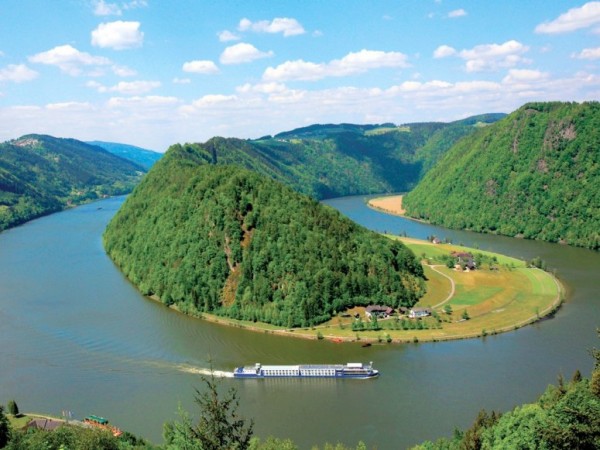
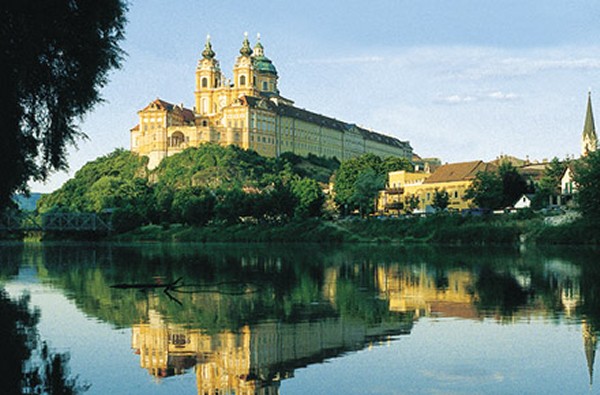
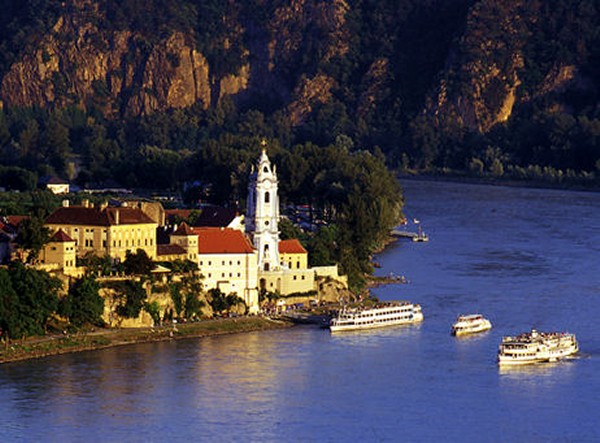
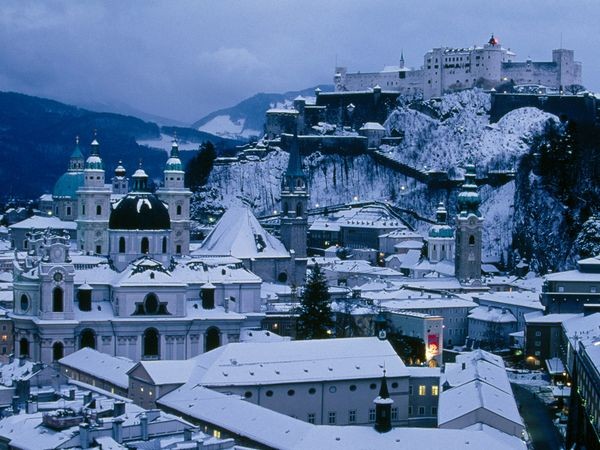
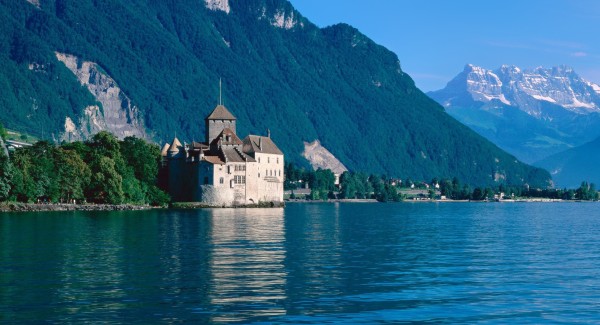
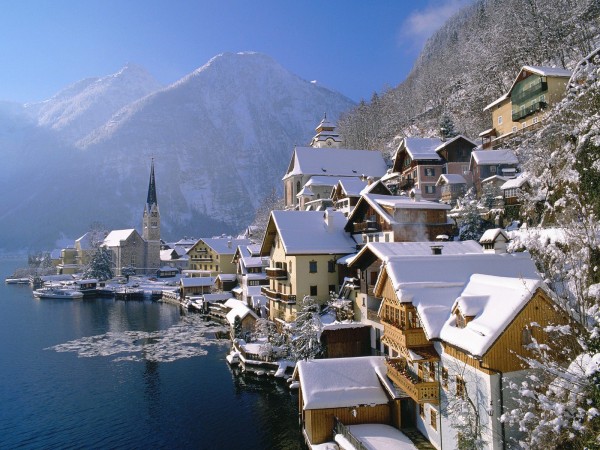
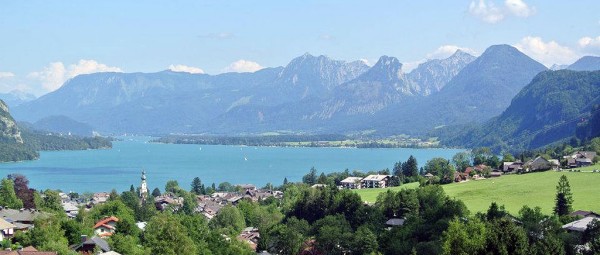
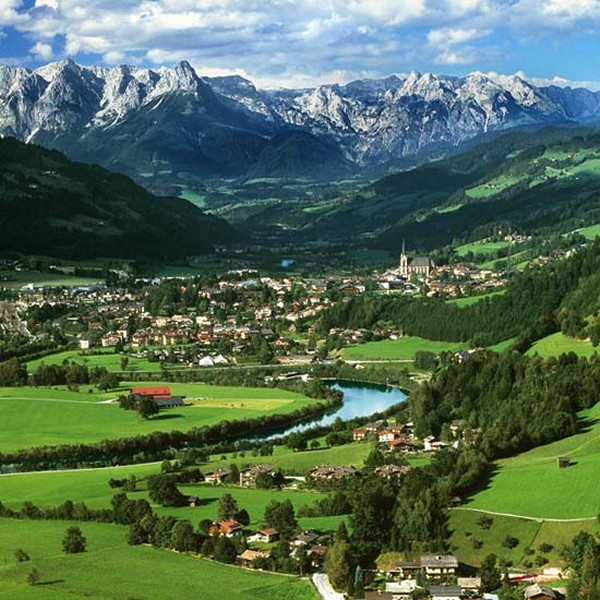
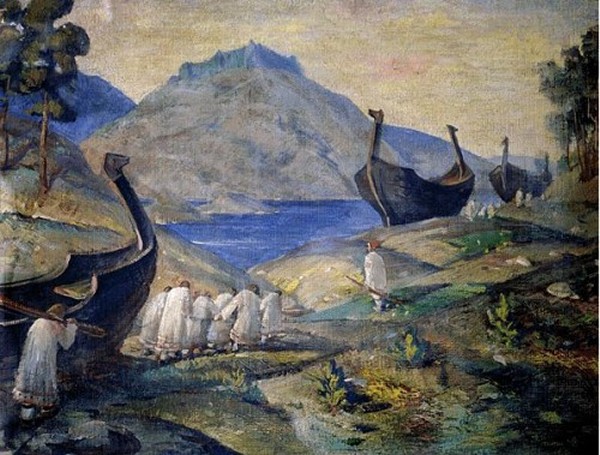
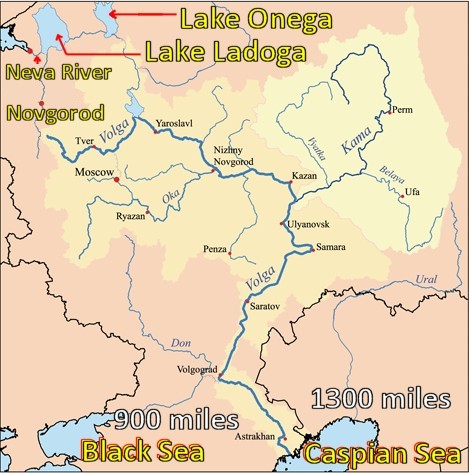
The
map shows the proximity of Novgorod to the Volga River
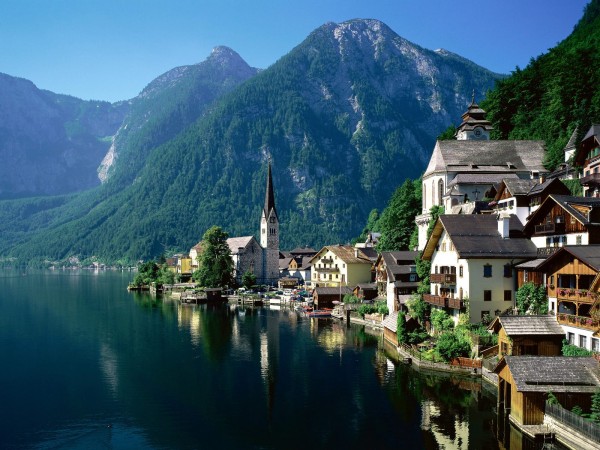

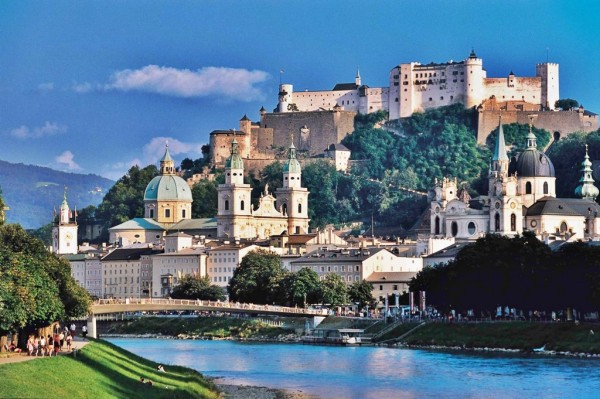
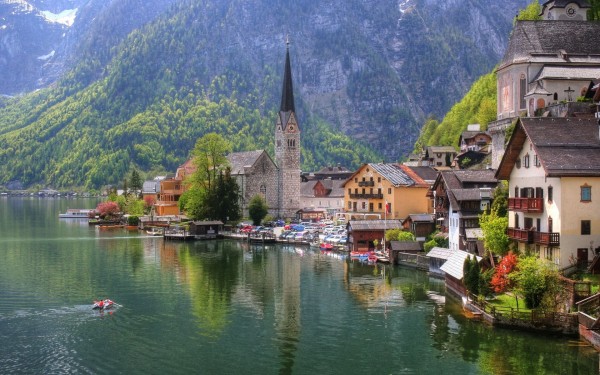
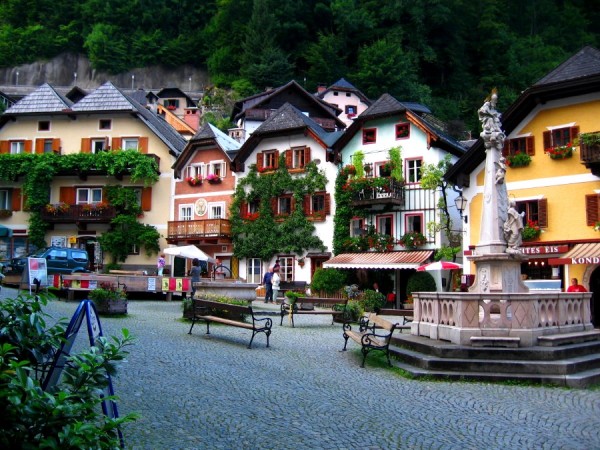
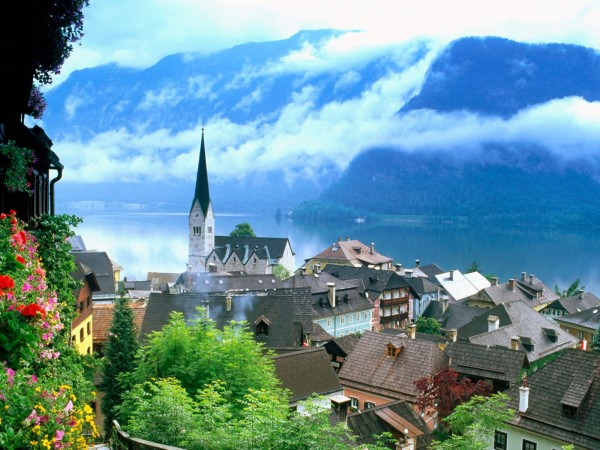 |
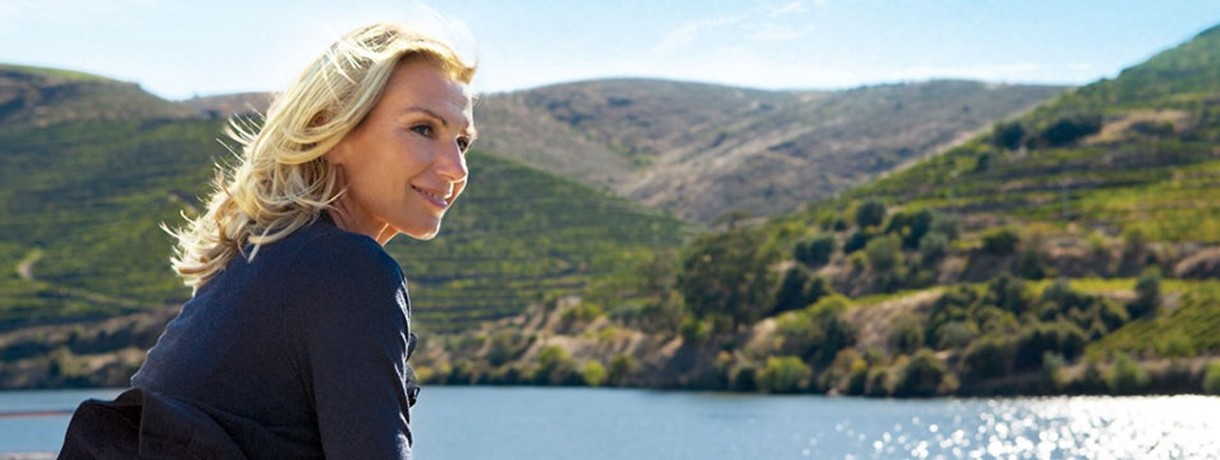 |
For more information about our trip,
be sure to read
About Germany
|
|